|
The month of October can be a scary time for young children, but we can help them handle their fears with four simple strategies. Strategy 1: Recognize and respect children’s emotional limits and their self-advocacy skills.Be aware of what is especially scary to your children. Avoid images and situations that provoke unnecessary or unhealthy fear. If a scary situation is unavoidable, provide emotional support. If you know a child has a specific fear, be especially understanding and respectful of that child’s experience. Some experiences during the Halloween season may invoke more fear than fun for young children. Most “haunted houses” would be better saved for older children with a better understanding of their personal safety and what is not real. Older children typically can distinguish that fake blood and zombie costumes are not real and that something reaching out to grab them is not a real physical threat. Even trick-or-treating may become overwhelming to young children. If your children encounter something that scares them, offer physical distancing and words of comfort, “We can go over here.” Reassure using specific language such as, “You are safe with me,” rather than non-specific, “You’re okay!” Dr. Rachel Busman, a clinical psychologist at the Child Mind Institute, notes that, “Fears that don’t interfere with a child’s life don’t always need getting over. For example, if a child doesn’t like scary movies, that’s fine. It may actually be a testament to his self-advocacy skills. Deciding, ‘I don’t like these, I’m not going to watch’ is your child standing up for his needs and saying, ‘This is my limit.’” When your children have had enough trick-or-treating, call it a night. Give them fun and not fear - all treats, no tricks! Strategy 2: Talking can help young children feel safe when their world gets scary!“Let your kids know you take their fears seriously, even if they don’t seem scary to you”, says Rae Jacobson, senior content and marketing writer at the Child Mind Institute. She continues, “For example, instead of, “Oh come on, that wasn’t scary!” try, “Wow, it sounds like you were scared!” Once they feel reassured, you can talk about how you’ll work together to help them be brave.” (2) At Halloween, children may encounter scary images and situations more often than usual. Sometimes older children and adults may unintentionally make this even more difficult for a young child to handle, dismissing a child’s fear or saying they are silly to be scared. Talk with young children about what scares them. Share something that you used to be afraid of, and reassure them that you are there to help them feel safe. Validate all young children’s fears (including the imaginary ones), just as we want validation of our own fears. Strategy 3: Helping children find words to effectively voice their feelings builds vocabulary and confidence!In the children’s book, Go Away, Big Green Monster, author/illustrator Ed Emberley visually takes away a big green monster bit by bit until the narrator declares, “and don’t come back until I say so!” (1) Young children may not have the vocabulary to say what they are afraid of. Emberley’s book gives them words to use to tell that monster to go away! We can help children use language by exposing them to appropriate vocabulary and empowering them to use it. When we say, “Tell that monster ‘Go away!’”, we are giving children words and power. When children can voice their feelings and feel that they are heard, they learn to face their fears with confidence. While some scary situations may call for an adult’s comfort and reassurance that they are safe, others may be opportunities for children to face their fears themselves. Gradually allowing more of these opportunities builds social-emotional skills that are necessary throughout life! Strategy 4: Pretend play provides children the opportunity to process fears and develop important social emotional concepts.Young children are learning to distinguish reality from fantasy. They can accomplish this through pretend play, dress-up, acting out stories with props, etc. To help them work through the scary parts of this month, include Fall and Halloween props in a pretend play area. Here are some ideas:
You can create a Halloween playhouse by decorating a large box (with cut-outs and open top), letting children draw spiders and spider webs on it and pumpkins/jack-o-lanterns at the “doors”. Opportunities will abound for them to process and act out their own scenarios or role play with a teacher or parent. This safe and familiar, kid-friendly environment helps young children enjoy seasonal activities and develop important concepts. Having their own experiences pretending can help them understand that the costumes and masks they may see at Halloween are just people dressing up and pretending. All of us at ECS - and eepworm - are wishing you and your children a safe and happy Halloween! -Diane, Corinne, Marjorie, Ashley & Arlene References & Resources
0 Comments
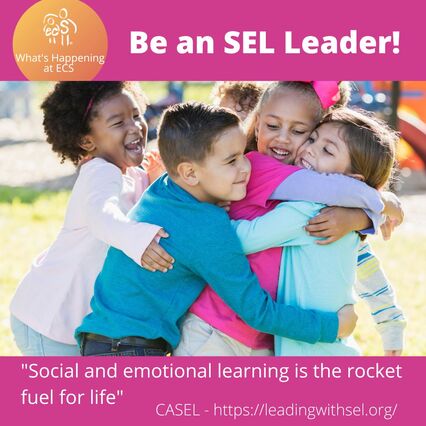 We want to help you lead the school year with SEL (social emotional learning)! According to the Leading with SEL Coalition facilitated by CASEL: “If you believe every child deserves...
As SEL leaders, we help children develop many social-emotional skills. This month we thought we'd focus on self-regulation, sharing some of our favorite tips. 1. Keep in mind that we are all works in progress, children and adults alike!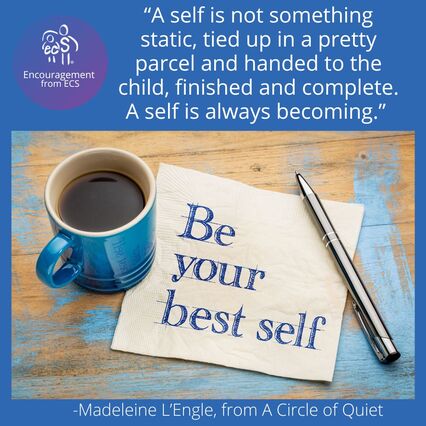 We adults have our own struggles with self-regulation, like controlling our emotions when we are tired, frustrated, feeling misunderstood, or when children’s challenging behaviors trigger our emotional buttons! We all have moments when our own self-control is challenged - and sometimes that is precisely when children need our guidance the most! When children’s behaviors “push our buttons,” we must calm ourselves before we can effectively guide them toward self-regulation.. What can you do to regain your composure?
To read more on topics such as Mindfulness, Self-Regulation, and the Power of Positive Guidance, see our previous blog posts. 2. Build children’s vocabulary of feeling words!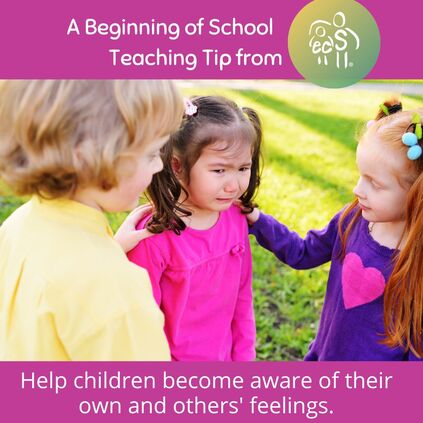 When we provide words for children’s feelings, we are giving them tools to manage their emotions and their behavior. We may even be boosting our own emotional intelligence by building our feelings vocabulary. Don’t be afraid to use big words with children. Go beyond happy, sad, mad, and scared. Help children understand exhilarated, dejected, exasperated, wary, and others. A feelings chart can be a helpful tool for children to identify and understand different emotions. Search online for free printable feelings charts for your classroom. Besides building a feelings vocabulary, you can use feelings charts in several other ways:
Our own book and toy set, EEPWORM’s Emotional Day, is another tool for building a feelings vocabulary. We provide 15 different feelings words in our note for parents and teachers to guide your discussion about the emotions in the story. You can watch story times of both our eepworm® books on YouTube at (https://www.youtube.com/channel/UC_WzmpQIN_N8bTgPHX2U72w). The notes to parents and teachers are included only in our printed books (available for purchase at our online store at https://www.earlychildhoodspecialties.com/store.html). 3. Recognize how gradually self-regulation develops! Young children don’t already know how to self-regulate when they join a school or child care setting. They may not yet have the ability or the communication skills to let us know what is wrong, much less to handle it appropriately. Our primary responsibility as caring adults is to meet the basic physical and emotional needs of young children. At first, children need our constant support. For a helpful description of self-regulation, see this short video from Empowered to Connect: https://www.youtube.com/watch?v=INGgzIO7vOY Eventually children learn to behave appropriately more of the time, even without us. This process of self-regulation happens very gradually from infancy to young adulthood, and it requires lots - and lots - of guidance and practice. Self-regulation takes such a long time because of all the skills involved and because it depends on the children's developing social, emotional, and cognitive skills. Here are some examples of self-regulation skills that children learn over time:
For their emotional development and well-being, children need lots of help from adults to learn to self-regulate. Our role is to build children's capacity for self regulation. We provide this "capacity-building" not only through direct instruction, but also through the many ways we support children's social emotional learning. -Follow Early Childhood Specialties on social media for tips on how to help children learn and practice self-regulation and healthy social and emotional skills. -See our previous blog posts on self-regulation -Share with us your thoughts and experiences about self-regulation! 4. Support children’s self-regulation with fun movement activities!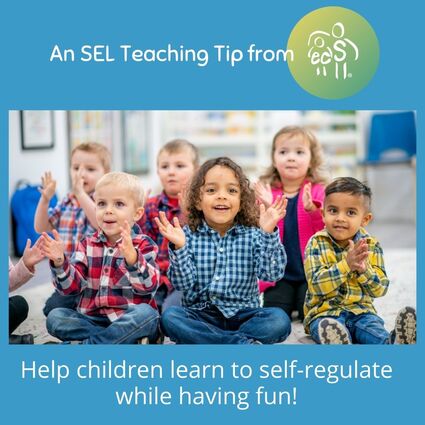 Self-regulation is a complex process that allows children to appropriately respond to their environment. It helps them manage their emotions, thoughts and behavior. Keep in mind that self-regulation: -Develops gradually -Includes physical, emotional, behavioral and cognitive (thinking) skills -Takes lots of practice and repeated learning opportunities -Requires intentional planning by teachers, caregivers and parents. Following directions is one of the self-regulation skills that develop over time and with experiences. Music and movement activities are a fun way to help young children learn and practice self-regulation. Here are a few to try:
Over time, fun activities such as these improve overall listening skills, planning when to move and when to stop, and self-regulation. Playing interactive games with your children also increases emotional connection! Having your children watch a video version of activity songs is a missed opportunity to connect and communicate - get active with them instead! We probably don’t need to remind you that songs, games, and social emotional activities are not a break from learning in classroom settings. They are an age-appropriate way to teach young children self-regulation skills essential to learning in any environment. Rest assured that when you provide these fun experiences you are indeed helping children learn valuable skills! Share with us your favorite fun ways to help young children learn to follow directions! 5. Create a climate conducive to the 4 C’s!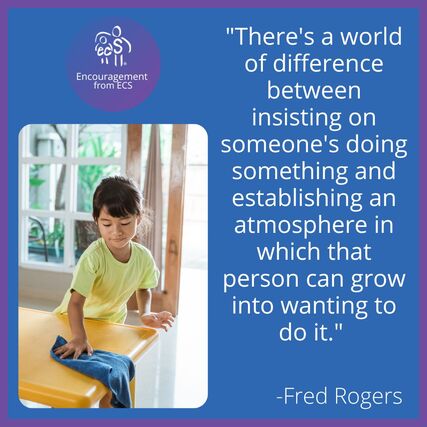 The climate in the classroom, home, or caregiving setting should be one of loving support, safety and acceptance. Young children will learn and thrive when adults control the climate, keeping in mind the 4C’s! Our own model, The 4 C’s Framework of Emotional Support, can guide adults in giving children what they need both when they are upset and when they are calm. The first 3 C's are things children need when they are distressed: connection, calming and compassion.
The 4th C is capacity-building of self-regulation. When children are calm and ready to learn, adults can build their capacity for self-regulation and resilience by teaching them what to do instead and applying other strategies and environmental supports to help them handle future challenges. To learn more about our 4 C’s Framework of Emotional Support:
6. Teach children self-regulation skills, such as following directions!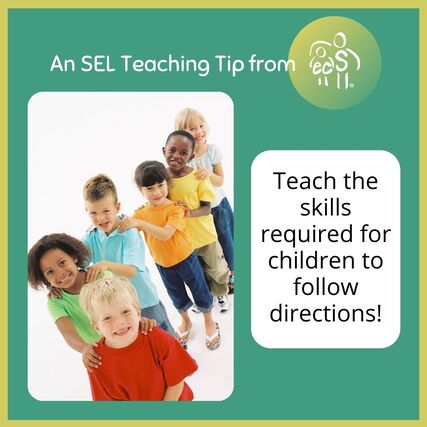 Following directions can be considered a self-regulation skill, but before children can follow directions, they may need specific instruction to learn what is being asked of them. One example that Diane and I (Marjorie) talked about recently was “lining up”. Typically that is not something children need to know at home, or prior to coming to school. It is something that children are expected to “know”, or quickly learn when they begin school, or in any group childcare setting. Teach what lining up means and why we do it: to walk down the hall, to stay safely together with our class, to take turns at the water fountain or slide… Try these activities to teach, support and practice following the direction to “Line up!”
Share with us your favorite ways to teach children to “Line Up”! How can you add learning, variety and fun to this routine activity? 7. Model self-regulation skills, such as showing self-compassion!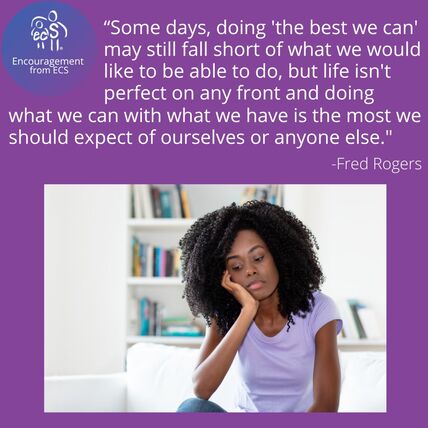 Showing self-compassion means accepting our own limitations, giving ourselves credit for how far we have come toward a goal, or that it is time to rest and recharge until another day. When we show self-compassion, we are not only improving our outlook on our own lives; we are also providing a model for children learning to show compassion to themselves and others. We can model and verbalize acceptance of our efforts and abilities: “We practiced really hard today!” “I did the best I could!” We can be the voice encouraging young children until they can provide their own voice of encouragement and self-compassion. After all, children are soaking up the how-to’s of life from the models they see and hear. It’s not always a “lesson” or an intentional response that leads children to develop social and emotional skills. Showing self-compassion has other benefits for us and our children as well. How we see ourselves and accept our own limitations have much to do with how we treat others, whether we are willing to try new things, and how we continue to learn throughout our lives. -Show self-compassion at the end of the day by thinking of things you did – even the smallest steps. -Share how to do this positive reflection by talking with your children about things they did, learned, or practiced that day. -How can you show self-compassion using positive language? References & Resources Conscious Discipline. (n.d.) https://consciousdiscipline.com/consciousdiscipline.com/
Devereux Center for Resilient Children (DCRC). (n.d.). https://centerforresilientchildren.org/ Leading with SEL. (2022). Collaborative for Academic, Social, and Emotional Learning. leadingwithsel.org/ What is Self Regulation? (Mar 29, 2022). Empowered to Connect. www.youtube.com/watch?v=INGgzIO7vOY As the new school year approaches, we want to share some of our favorite SEL strategies for starting off strong. Social emotional learning is a sturdy foundation on which children's success in learning - and in life - is built. We hope you find our tips helpful as school starts, or at any time of the year! 1. Find your inner calm!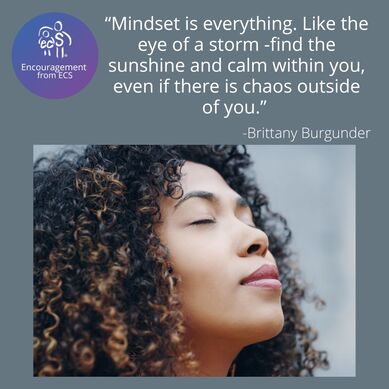 Calm may not be the word that comes to mind when thinking of a classroom of young children, especially in the first days of school! Practicing your own self-regulation skills to keep calm during times of stress will help you be better able to help your children feel safe. Modeling the strategies you use to calm yourself and self-regulate not only helps you, it also supports young children as they begin to learn these important skills for themselves. Below are just a few ideas to try. For more mindfulness activities, see our previous blog posts. Breathing: Help children learn breathing exercises to calm themselves, and be mindful of your own breathing. When your body or a situation tells you, “I need to take a breath,” try "box breathing": Step 1: Breathe in counting to four slowly. Feel the air enter your lungs. Step 2: Hold your breath for 4 seconds. Try to avoid inhaling or exhaling for 4 seconds. Step 3: Slowly exhale through your mouth for 4 seconds. Step 4: Repeat steps 1 to 3 until you feel re-centered. Movement: -Take a brain break with the children by leading a movement activity aimed at calming -Take a walk outside (either on a break, or with children during outdoor play) -Practice simple stretches (like reaching for the sky, touching your toes, arm or neck circles). Re-centering: Have a touchstone, a physical object that reminds you of being centered. It can be a piece of jewelry that you wear, a family photo, or written words that serve as a reminder of core values, or a goal. For a child, it may be a comfort item (like eepworm!) or words of re-assurance such as, “You are safe. You can handle this. I am here to help you.” How do you find your calmness in stressful situations? Please comment below! 2. Begin by creating connections with children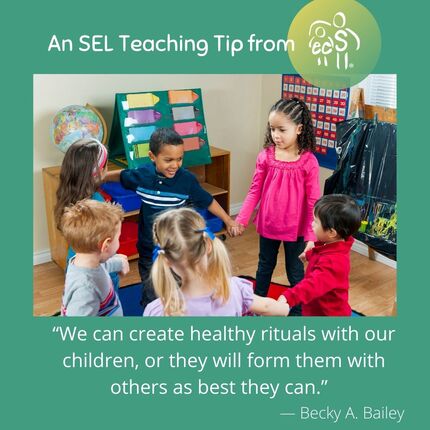 Here are some ways to make connections with each of your children at the beginning of the day. Do what works for you and the children you care for. If children enter the room from a hallway, greet children as they enter. While there are charts available with greeting choices, it may be best to make or modify your own. Limit choices and have children give input as to their favorites to include. Choices can be changed or added over time. Choices can include:
After the morning greetings, create opportunities to connect with each child throughout the day by playing connecting games with them. For ideas for connecting activities with children, see our previous blog posts. We also highly recommend Dr. Becky Bailey’s book, I Love You Rituals. 3. Help children connect with friends!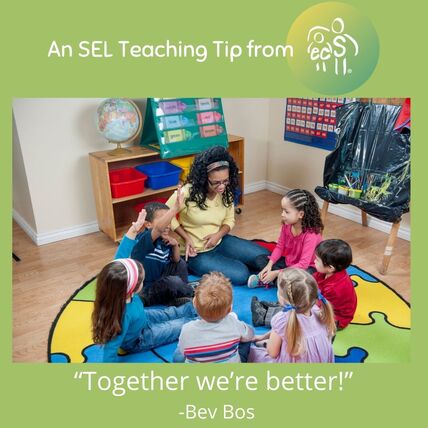 Imagine how young children feel when they will be going to a new class or school, especially if the experience is totally new for them! We can help children adjust to these new situations by including activities that strengthen peer relationships and nurture important social-emotional skills. Here are some of our favorite ways to help children get to know new friends at school: -Make a class book with pages picturing every student. Children love recognizing and naming classmates. -Practice name games, like singing, “My name is Miss Marjorie.” Children echo, singing back, “Her name is Miss Marjorie.” Continue with everyone’s name. -Help children make friends through stories. “Meesha Makes Friends” is a book by Tom Percival, author of the Big, Bright Feelings book series. In the beginning of the story, Meesha is happy to “make friends” out of paper and craft materials, but not as comfortable talking to other children. Sharing this book can open a discussion with preschoolers: “How did Meesha “make a friend”? How do you make friends?” Children can also “make a friend” like Meesha and Josh in art! -Guide children through role playing. “What do you say when you want to play with someone else? When you want a turn to play? When you need help? When someone asks you if they can play with you? How do you feel when someone shares a toy with you or gives you a turn?” How do you “coach” children through making friends with classmates? Share with us your favorite name game or connecting activity! 4. Help children meet all the adults in their school family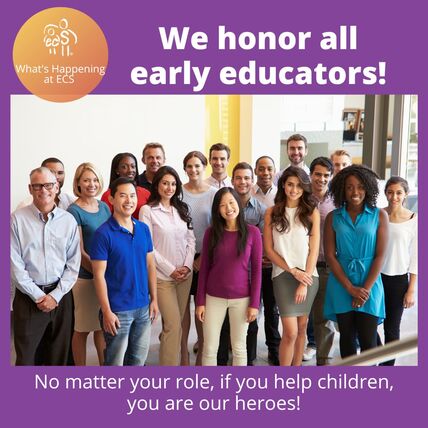 When we talk about the school family, we are referring to children and those who support and care for them, providing a safe and supportive place in which they can grow and learn. We can help children feel safe by introducing them to all the adults who work in their school or child care program. We can provide opportunities for the children to connect with each adult, not only at the beginning of the school year but throughout the months. If we notice and point out the adults contributions, the children will begin to do the same. Here are a few ideas that may to reinforce these connections and the children's sense of appreciation: -Make a book of the people at school, explaining everyone’s jobs and emphasizing that they are all a valuable part of the school family. -Help children show appreciation for all the people who take care of them at school. Assist them in drawing or writing notes of thanks, especially when school family members do something above and beyond their duties. 5. Make the most of your morning routines - before and during school 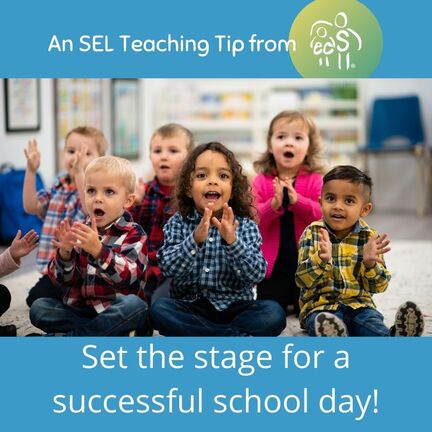 Mornings can be hectic for families at home, in the car, and at drop-off, especially at the beginning a new school year! Take a deep breath and guide your children to school or child care by sending the calming message that ``It's gonna be a good day!” Try to keep the before-school morning routine as consistent as possible. As you dress or prepare for the day, talk through any special activities your children can look forward to, like telling them that you packed their favorite snack! Connecting games can be incorporated into the morning drive. Sing favorite songs together or look for familiar places along the way. At school, share a hug or handshake that is special to you and your children. If possible, walk your child to their teacher or caregiver. If your child is upset at your leaving, show compassion, focus on safety and provide a connection before you leave. You may say, “I see you are feeling scared that I am leaving. You are safe here at preschool, and your teachers will keep you safe and help you learn and play today!” Let’s take a big breath and say “Have a great day!” At school, teachers and caregivers can begin the day with consistent routines. For young children, a familiar “Good Morning” song can be an opportunity to individually greet and connect with teachers and other children. Keeping the daily schedule as predictable as possible helps calm the children's uncertainties as to what is going to happen. Posting a picture schedule and reviewing it during every transition can ease children into the school routine until it becomes familiar. 6. Set goals and take action on them every day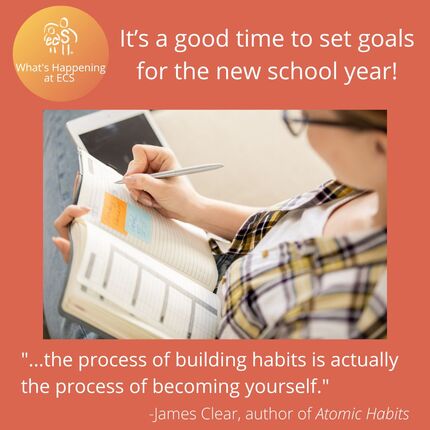 The beginning of a new school year is a good time to set goals. For myself, I find setting goals much easier than accomplishing them! If you struggle with taking action toward your goals as I do, perhaps you can try what I'm trying: start with small steps. I got this idea from a book I recently read, Atomic Habits by James Clear. Another piece of valuable info in the book is this: the best way to change a habit is to focus on the person you want to become. So I’ve started telling myself, “I’m the kind of person who…” Here are some of my personal examples: -I’m the kind of person who follows through in a timely fashion when I say I will do something. -I’m the kind of person who completes projects I start -I’m the kind of person who reaches out to help others NOTE: I don’t have any of these identities yet! But I want to be the kind of person who does those things - and much, much more. And I’m finding James Clear’s idea of focusing on identity to be a helpful way to start. I hope it will be helpful for you, too. Here are some identity ideas to get you started, based on my 4 C’s Framework of Emotional Support. Perhaps you would like to be: -a connected teacher, who builds strong, caring relationships with each and every child -a calm teacher, who uses deep breathing and other stress relief strategies regularly as part of your self-care -a compassionate teacher, who is empathetic toward all your children, especially the challenging ones For more info about these 3 C’s and the 4th C as well (Capacity-Building of Self-Regulation), see my blog posts from May and June of this year We hope you found some of these ideas helpful. Please share your own if you are willing.
All of us at ECS are wishing you a wonderful school year! This month, we want to share some ideas for activities you can use in your classroom and home this summer - or any time of the year! We hope you enjoy these ideas for outdoor play, early literacy, art, science, and gender-neutral environments and toys. Please comment to share your own favorite teaching tips or activity ideas - there are so many wonderful ways for children to learn through play! Here are some ideas for exploring the outdoors with young children:
*Note: The safety of young children is our responsibility as caregivers. While you should be watchful not to knowingly expose children to danger, that does not mean clearing the path so they never have the chance to explore environments, test their own abilities or judge their own level of risk within a safe and supervised setting. Summer is the perfect time to give children the chance to read or be read to for fun and information. Visit your library to find books about a topic your children enjoy or that features their favorite characters. Check out a book that is beyond your children’s ability to read on their own and read it to them. Set aside time during your summer schedule for “read to me time”. Attend library programs, or read a book at naptime or bedtime. Reading to your child instills a love of language and the understanding that what we say can be written, what we write can then be read. It also builds connections between reader and child! Public libraries across the country have summer reading programs and incentives for all ages, even grown-ups! Visit your local public library to find out more about what they offer, or you can provide your own reward at home when a reading goal has been met. Share the power of reading with children:
Open-ended, creative art experiences emphasize process over product. Through these experiences, children explore materials instead of being told “how to do it” or what color something “should” be. Some process-focused art materials and activities to explore with young children include:
For more information, we recommend “How Process-Focused Art Experiences Support Preschoolers” https://www.naeyc.org/resources/pubs/tyc/feb2014/process-art-experiences There are so many science activities you can enjoy both indoors and outdoors! Besides the activities you provide in the science center in your classroom, you may want to provide these outdoor explorations as well: Sun:
Sand and dirt:
Water, clouds and rainbows:
While we as early childhood educators and parents may strive to make our classrooms and play areas places where boys and girls are equally encouraged to explore their own interests, we know that many social traditions as well as marketing and packaging are aimed at boys or girls. At ECS our team has always supported play that is child-led, not directed by an adult to be gender specific. Here are some ideas for fostering gender neutral play environments:
Notes from Marjorie: The “housekeeping/dramatic play” area of my classroom was always just as popular with boys! They took care of baby dolls, cooked, counted play money from wallets, and enjoyed seasonal activities like raking colorful (fake) leaves. Teachable moments when children are at play give us opportunities to encourage children’s play choices, like, “Rufus is doing a great job feeding the baby!” or “Look at the bridge Ava built with blocks!” Encouraging everyone equally provides the example for all to encourage one another and themselves! If a boy says he wants to be a mommy, he can pretend that role in dramatic play, dress-up, or play with people figures or dolls. If a child insists, “Boys can’t be mommies!”, talk about boys and men who also take care of babies and kids when they are daddies, brothers, teachers, doctors or nurses.
Play is the means through which children learn, and toys are the tools we give them to accomplish that job. What toys can best help? To help answer that question related to gender roles, NAEYC asked a researcher about her work on gender-typed toys: “In general the toys most associated with boys were related to fighting or aggression (wrestlers, soldiers, guns, etc.), and the toys most associated with girls were related to appearance (Barbie dolls and accessories, ballerina costumes, makeup, jewelry, etc.)." "The toys rated as most likely to be educational and to develop children’s physical, cognitive, artistic, and other skills were typically categorized as neutral or moderately masculine. We concluded that strongly gender-typed toys appear to be less supportive of optimal development than neutral or moderately gender-typed toys.” Her advice for parents and teachers: “Strongly gender-typed toys might encourage attributes that aren’t ones you actually want to foster. For girls, this would include a focus on attractiveness and appearance, perhaps leading to a message that this is the most important thing—to look pretty. For boys, the emphasis on violence and aggression (weapons, fighting, and aggression) might be less than desirable in the long run." "Also, moderately masculine toys have many positive qualities (spatial skills, science, building things, etc.) that parents might want to encourage in both boys and girls. It is the same for some moderately feminine toys (nurturance, care for infants, developing skills in cooking and housework).” For the full interview, see "What the Research Says: Gender-Typed Toys" https://www.naeyc.org/resources/topics/play/gender-typed-toys This doesn’t mean you should toss out your children’s favorite toys! Just be aware of the play opportunities those toys provide. Strive for a balance of toys led by the children’s interests, their developmental levels, appropriate safety, and whether those toys will provide opportunities for learning!
We hope you got some new ideas for activities to help children learn through play. Let us know your favorites so we and others can learn from you!
Now I'd like to share strategies for the 4th C, which is the support children need when they are calm and ready to learn: Capacity-building of self-regulation. The 4 C's Framework of Emotional Support
The 4th C: Capacity-Building of Self-Regulation
Many of the developmentally appropriate practices we use in the early childhood classroom help to build children's capacity for self-regulation. Strengthening relationships, teaching self-regulation and social skills, helping children to learn about feelings, and modeling self-regulation skills are ways to provide capacity-building strategies. In addition, sometimes we need to adjust our expectations of individual children's behaviors, accommodating possible developmental delays in executive functioning or self-regulation skills. Sometimes we may also need to adjust the environment, providing supports that make it more likely that children can navigate challenging situations. We do this when we ensure our environments are developmentally appropriate for all our children. It's helpful to include: predictable schedules with adequate warnings before transitions; a self-regulation or calming space where children can go to settle themselves down; and a variety of soothing sensory activities (5). Let's look more closely at seven strategies for building children's capacity for self-regulation. 1. CONNECT
2. TEACH Self-Regulation Skills
Just as with other concepts and skills, we can scaffold our instruction of self-regulation and social skills. We can be specific on what it means to take turns or which words to use in which situation. We can coach the children (include all those involved in the situation), walking them through the behaviors you are teaching. Later, we can provide prompts or visual cues to remind them of the expectations and provide encouragement for their efforts. Of course, they'll also need lots of practice! 3. MODEL Appropriate Behavior
4. Provide STRUCTURE and Predictability
Children who are delayed in the skill of flexibility likewise need our support to accommodate their needs. These children need extra warnings before transitions that help them plan for the next activity, especially when transitioning from something fun to something that's not so fun. When we break the tasks down into smaller steps, we can help children get successfully through the change in activities. Here's an example:
5. Play GAMES that Help Children To Stop and Think
6. Adjust your E's- Your EXPECTATIONS and the ENVIRONMENT
So we must accommodate these children's developmental delays in self-regulation. We may need to adjust our expectations of these children's ability to follow directions, take turns, stay on task, and other self-regulation skills. As an example, perhaps they can leave circle time sooner, or at least take a break or have a fidget toy or wiggle cushion to help them move while listening. Secondly, sometimes we need to adjust the environment. Children with sensory processing problems often become overwhelmed by sensory input, that is, by the sounds, lights, smell, and touches they experience in the environment. So we may need to accommodate these hypersensitive children by adjusting the sound and light level, providing more comforting, enclosed spaces and including a greater variety of sensory activities and materials in our classrooms. Using visual cues such as picture schedules may also be helpful. (See resource 7 for examples.) 7. Help Children REFLECT on their Feelings and Learn to CALM Themselves
There are many books that help children reflect on their feelings and the feelings of others. Be sure to check out our own eepworm books and toys! When reading with children, talk about the emotions the characters experience and how to recognize them. As mentioned before, we can teach children calming techniques such as deep breathing and other mindfulness practices to help children learn to calm themselves. We can also provide a self-regulation center or calming space so children can practice these techniques when they get upset. This is good for all children, not just the ones who have difficulty with self-regulation. (See our blog posts on mindfulness and resource 7 for activities for children.) I hope you've gained some strategies that help you build children's capacity for self-regulation. Let me know which ones work best for you. Any additional tips are welcome as well - we can all learn from one another! References & Resources
When young children are upset, they usually need help from adults to calm down. And the more upset they are, the more help they need! When children are distressed, acting out, or having a tantrum or a meltdown, they don't often know what to do. Sometimes as adults we don't know what to do, either! We may try distraction ("Look at this book"), reassurance ("You're okay"), questioning ("Why are you crying?), reasoning ("We have to clean up so we can have our snack") or consequences ("You need to be by yourself until you can calm down"). Unfortunately, these efforts don't always work as well as we'd like. Brain research and experts in child development, psychology and psychiatry show us a better way (1, 2, 4, 7). To handle their upset, children need three things from adults: Connection, help with calming, and to be treated with empathy and compassion. In my Framework of Emotional Support, I call these the 3 C's of co-regulation. (Co-regulation is the set of the adult strategies we use to help children manage overwhelming emotions.) Let's look at strategies for each of the 3 C's of co-regulation: 1. Connection
2. Calming
3. Compassion
After giving empathy, show compassion by offering to help the child deal with the feeling. Let them know "I'm here to help." Your job is to help them deal with the feeling, not to "give in" to what the child wanted that started their upset. I hope these strategies help you support upset children with the 3 C's of connection, calming, and compassion. Later, when children are calm and ready to learn, we can provide the other support they need. I call it capacity-building of self-regulation: We can build their capacity for self-regulation and resilience. We do this by teaching them what to do instead and by applying other strategies and environmental supports to help them handle future challenges. Watch for the next blog post for information about this fourth "C". References and Resources:
In honor of Autism Acceptance Month, here are 7 tips for working with children on the autism spectrum: 1. Find ways to teach children skills that will help them interact When a child wants to join a play group, be a social coach to all the children in your care. Model appropriate peer support and acceptance whether the environment includes classmates, family or friends. 2. Use clear and concise language Give simple directions. Avoid multistep directions or asking the same thing a different way before the child has had time to process and respond. Allowing ample wait time helps young children and all those who may need extra time to process directions or requests.
4. Keep choices clear and limited If a child is likely to be overwhelmed by too many choices or has limited verbal skills, offer two acceptable choices, such as apples or grapes for snack. (If a child is non-verbal the choice can be made using pictures or the items.) If offering acceptable activity choices following an inappropriate behavior, an example might be, “You can help your friends in the block area build their wall, or you can build something with your own blocks. You cannot knock their blocks down.”
6. Make consequences consistent and natural Help children understand and predict consequences by being consistent. As with consistent routines, there can be comfort and calming in predictability and in consequences that are natural, like putting a toy away before beginning a new activity. 7. Identify what triggers strong reactions Be aware of how a child’s sensory sensitivity may be affecting his/her behavior and how that affects their ability to self-regulate. A child whose brain is in fight, flight or freeze mode because of a sensory trigger will need help with calming before he/she can process a lesson or reflect on the behavior. Remove distractions such as noise or an overstimulating visual background when necessary.
References & Resources: Albert Einstein College of Medicine Autism Spectrum Disorder Defined. (2013, Jan 15). https://youtu.be/bo4-5xnRcYU
Center on the Social Emotional Foundations of Early Learning. (n.d.). Resources: Preschool training modules. http://csefel.vanderbilt.edu/resources/training_preschool.html#mod3b Ganz, J.B. & M.M. Flores. (2010). Implementing visual cues for young children with autism spectrum disorders and their classmates. Young Children 65 (3): 78-83. Head Start Center for Inclusion. (n.d.). Classroom visuals and supports. Teacher Tools. http://headstartinclusion.org/teacher-tools#visual Kaplan Early Learning Company. (n.d.). Supporting children with autism. https://www.kaplanco.com/ii/autism National Institute of Mental Health. (n.d.). Autism spectrum disorder. https://www.nimh.nih.gov/health/topics/autism-spectrum-disorders-asd/index.shtml OCALI Autism Certification Center (n.d.). ASD strategies in action. https://autismcertificationcenter.org/ Villa, J. & L. Colker. (2006). A personal story: making inclusion work. Young Children 61 (1): 96-100. Willis, C. (2009). Young children with autism spectrum disorder: strategies that work. Young Children 64 (1): 81-89. Willis, C. (2006). Teaching Young Children with Autism Spectrum Disorder. Beltsville, MD: Gryphon House. Written with Kristen K. Carroll What is Social Emotional Learning? According to Committee for Children, "Social-emotional learning (SEL) is the process of developing the self-awareness, self-control, and interpersonal skills that are vital for school, work, and life success." www.cfchildren.org/what-is-social-emotional-learning/ To celebrate SEL Day, we're sharing five ideas for promoting SEL in your classroom, program, school, or home:
4. Provide practice of problem-solving. Problem solving skills take a lot of practice and can be learned through opportunities for peer conflict resolution. Encouraging children to attempt to figure out how to solve a problem on their own promotes independence and self-confidence. Practice can also come from discussing scenarios and providing feedback on various solutions. When children learn to have healthy discussions and use active listening, they develop respect for others' opinions, even when they disagree. In my preschool classroom, I taught children a simple method of problem-solving. I coached them through the process, and eventually they could solve problems themselves!
First, let's define diversity, equity and inclusion. Here's what the terms mean to me:
We encourage everyone to model inclusion and respect for diversity in your classroom, program, or home and in the community. As we strive for equity, we can begin with a examination of our attitude. A – Attitude Are we demonstrating that differences are to be celebrated, that everyone belongs, and that we can meet each child where they are, providing what they need to reach challenging but achievable goals? When we have an attitude of respect for others, we exude that mindset and demonstrate it to our children through our actions and words. B- Books... A great way to show children our attitude of honoring diversity and inclusion is through the wonderful world of books! Here are a just a few suggestions to reinforce kindness, inclusion, and respect for all. ...And Beyond Another way to honor diversity and model inclusion would be to include depictions of or interactions with people of all races, abilities and other social identities throughout your classroom or home environment. Are multicultural dolls and pictures of all types of people easily accessible to your children? Do you provide opportunities for your children to interact with people from all backgrounds and walks of life? C- Classroom Activities/ Cool Ideas to Try at Home That leads us to activities to do in the classroom or at home. Here are some ideas for reinforcing kindness, honoring diversity, and encouraging inclusion:
As we implement activities to honor diversity and inclusion, let’s remember to incorporate them year-round. Avoid a “tourist approach,” where children “visit” other cultures only during holidays or special occasions; instead, provide activities that broaden children’s awareness of different ways of doing things.
As we are reminded to honor Black historical figures this month, let’s remember all the ways that we can show our respect for them – and others, in the past and in the present – throughout the entire year. Happy 2022!
Check out my previous blog post on mindfulness activities for children. Remember that we need to teach these strategies when children are calm and provide lots of opportunities for practice. Eventually children will be able to practice mindfulness themselves when they are upset. What a valuable skill for life-long self-regulation - and for a calmer classroom in the meantime! Here are four more mindfulness activities to help you to cultivate calmness in your classroom or home life. Please share your own as well - let's support one another as we strive for a better 2022!
Add these four mindfulness activities to your repertoire, and please share your favorites with us.
We at ECS are wishing you a happy, healthy, and calmer 2022! |
AuthorI'm Diane Goyette, a Child Development Specialist, Trainer, Consultant and Keynote Speaker. I'm excited to share my blog! Archives
August 2023
Categories
All
|
|
Ways to Contact Us:
Schedule an Appointment |
|
Follow earlychildhoodspecialties for encouragement, teaching tips and more!
|
Follow eepworm for child-friendly posts!
|
© 2013-2024 Early Childhood Specialties LLC. All rights reserved.

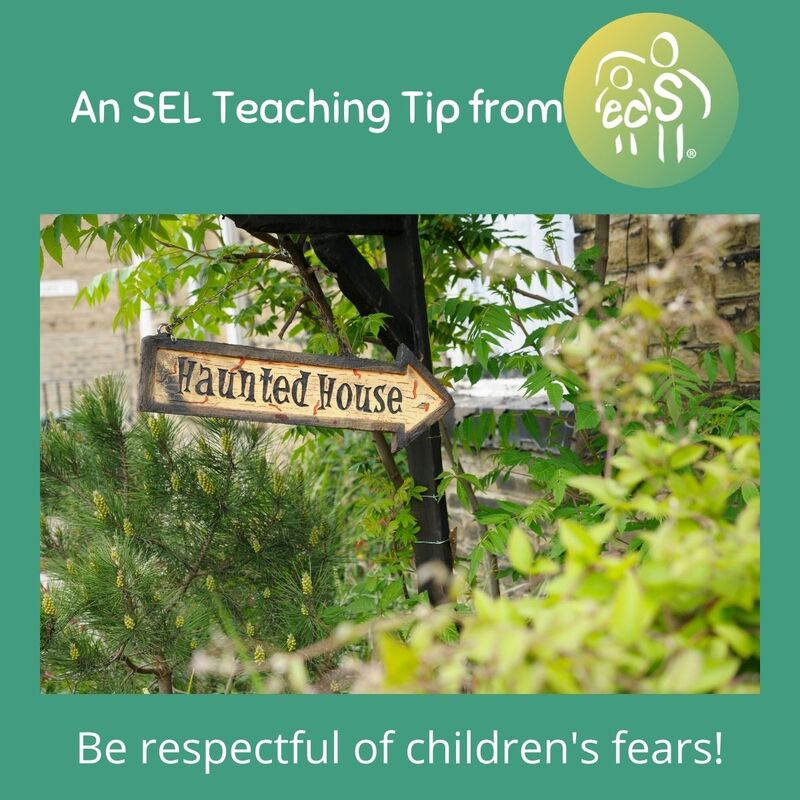
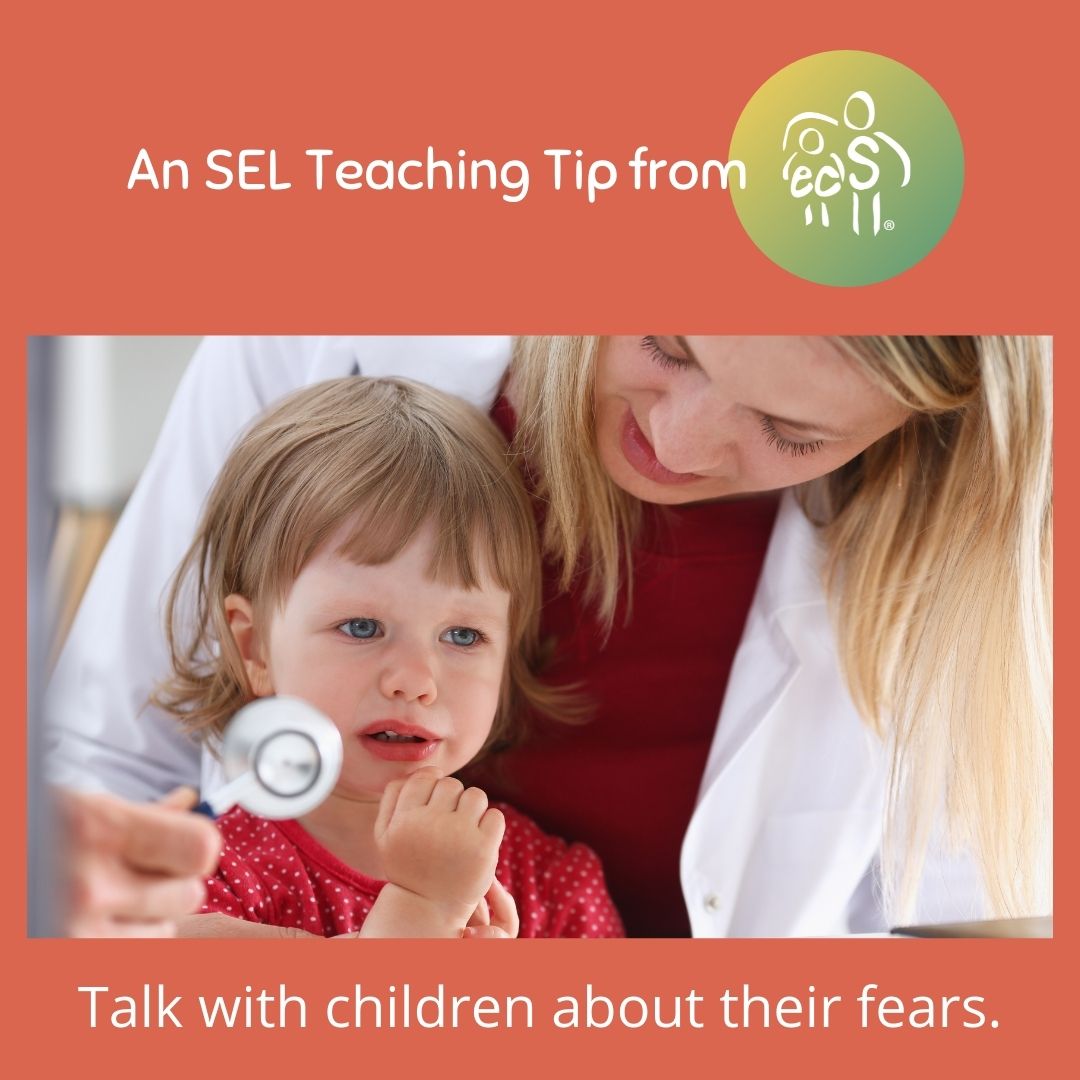
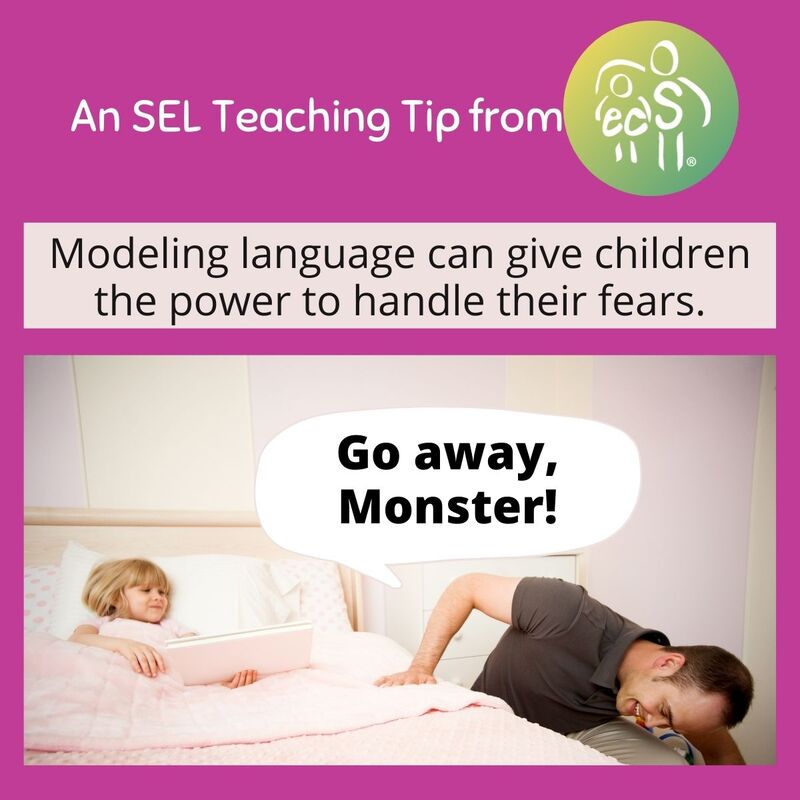
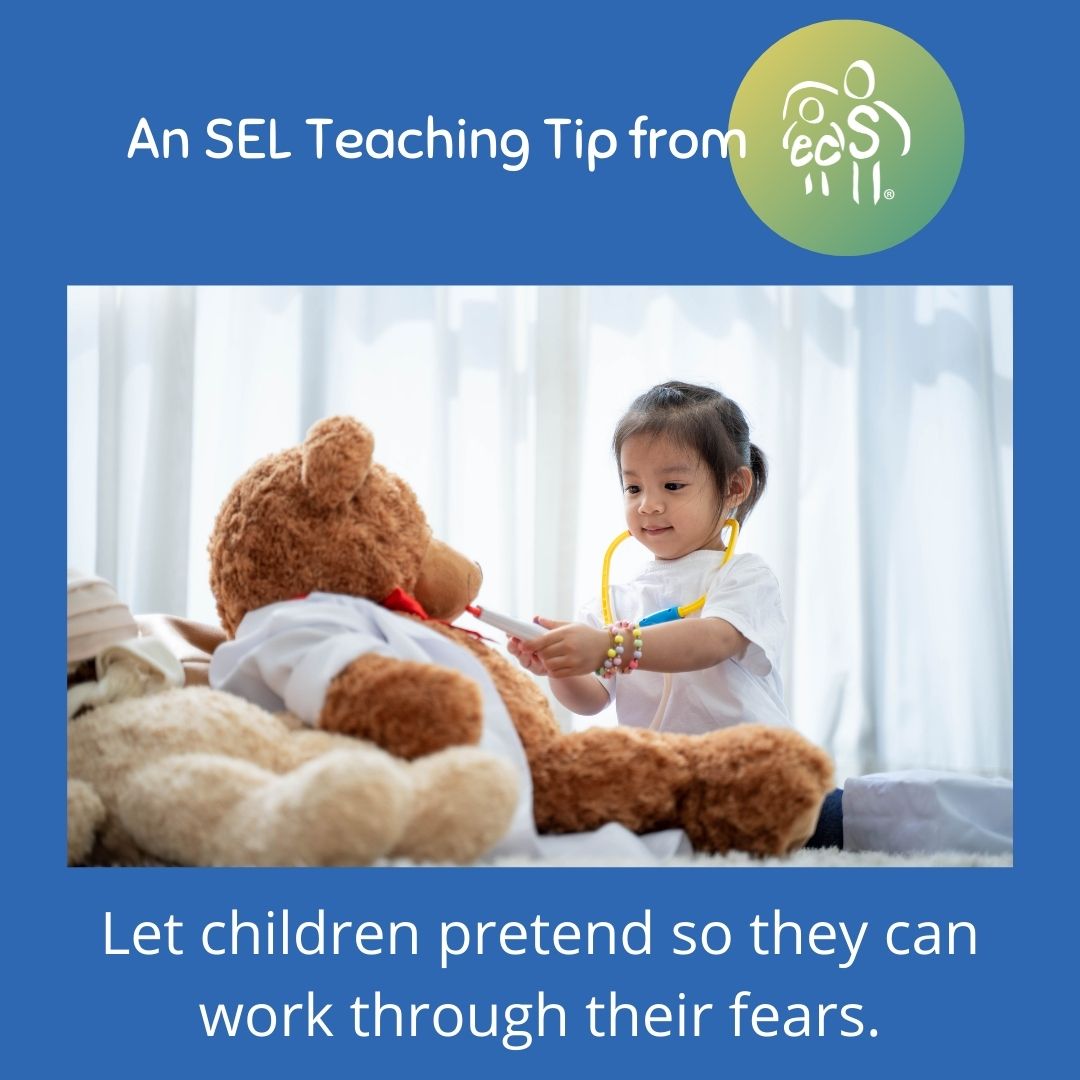
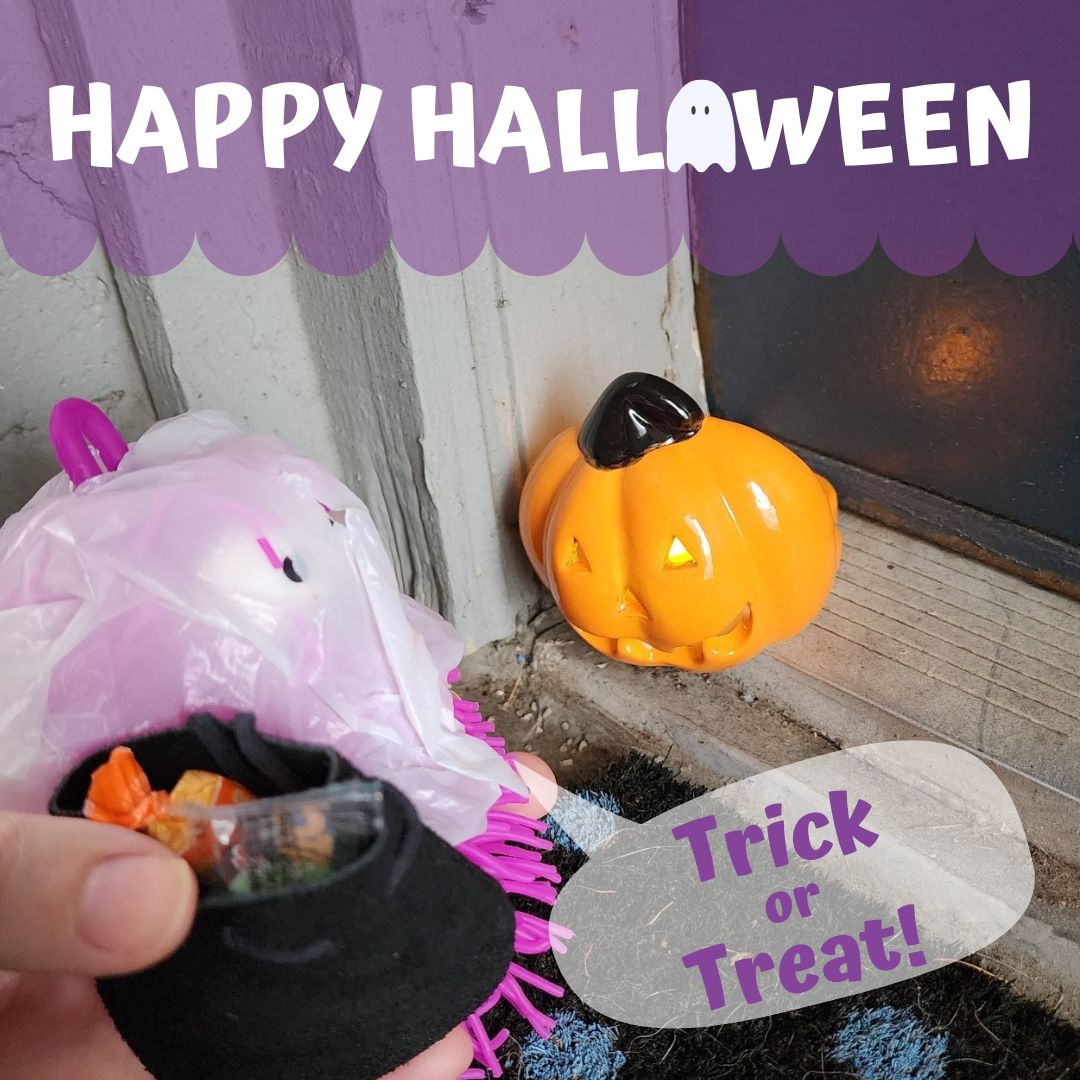
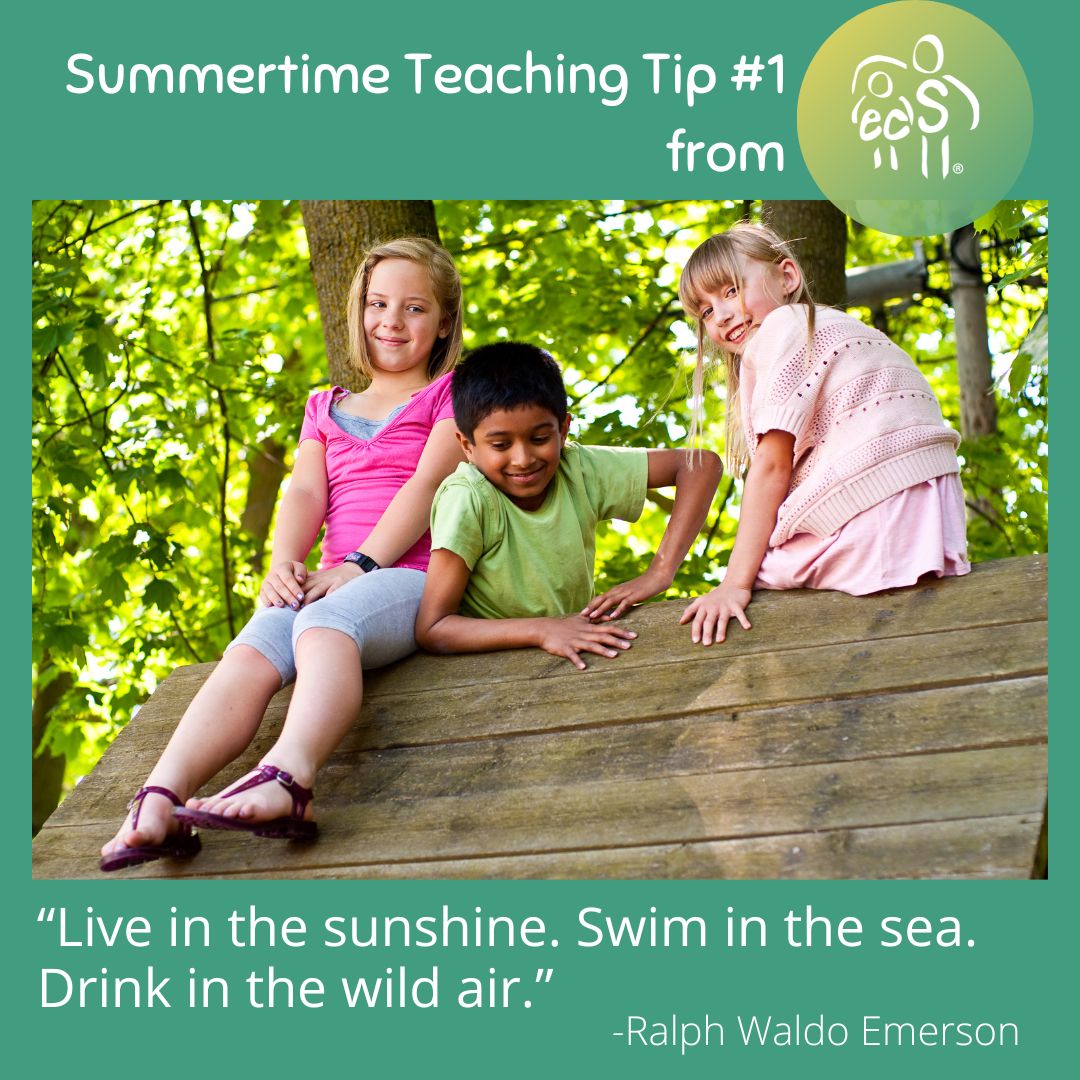
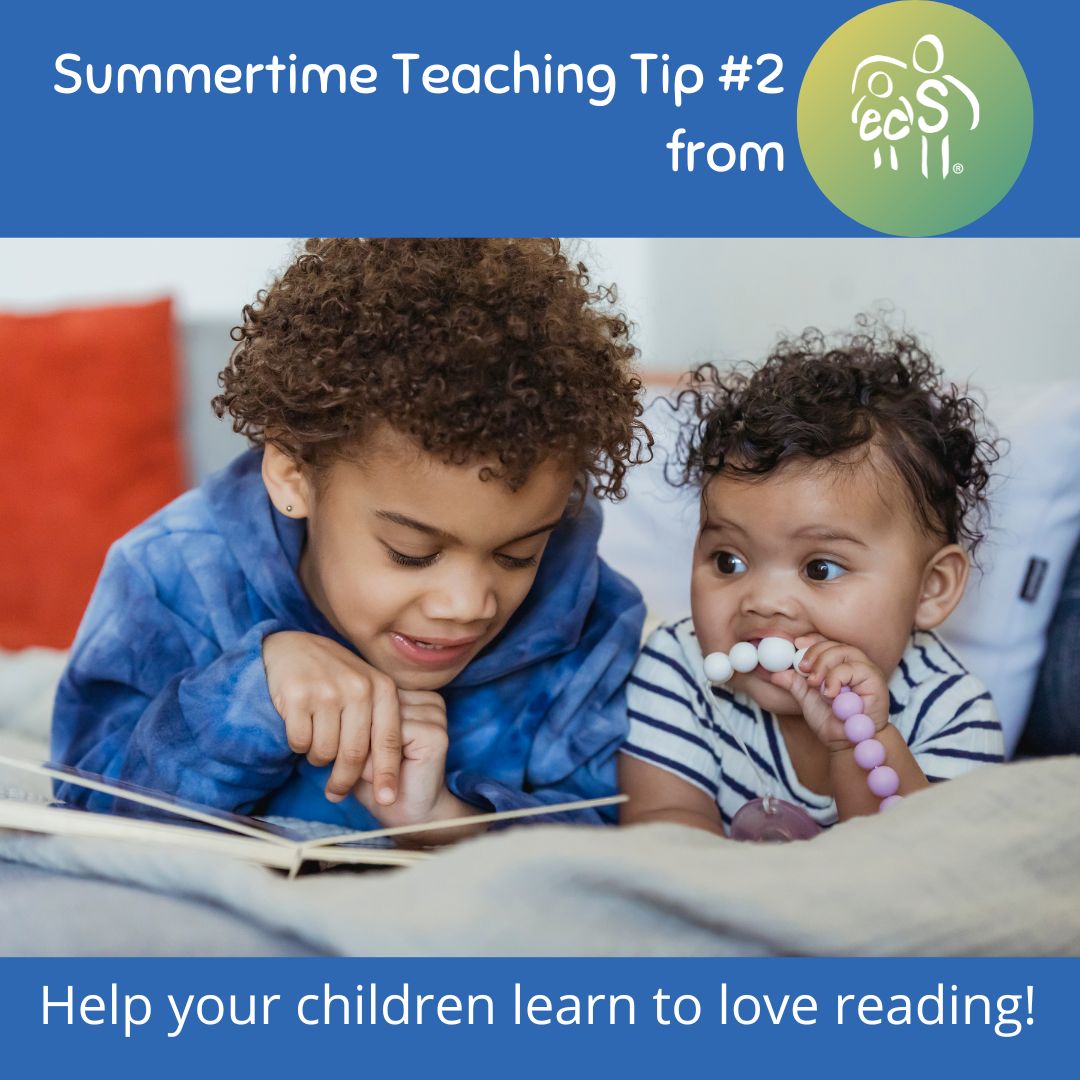
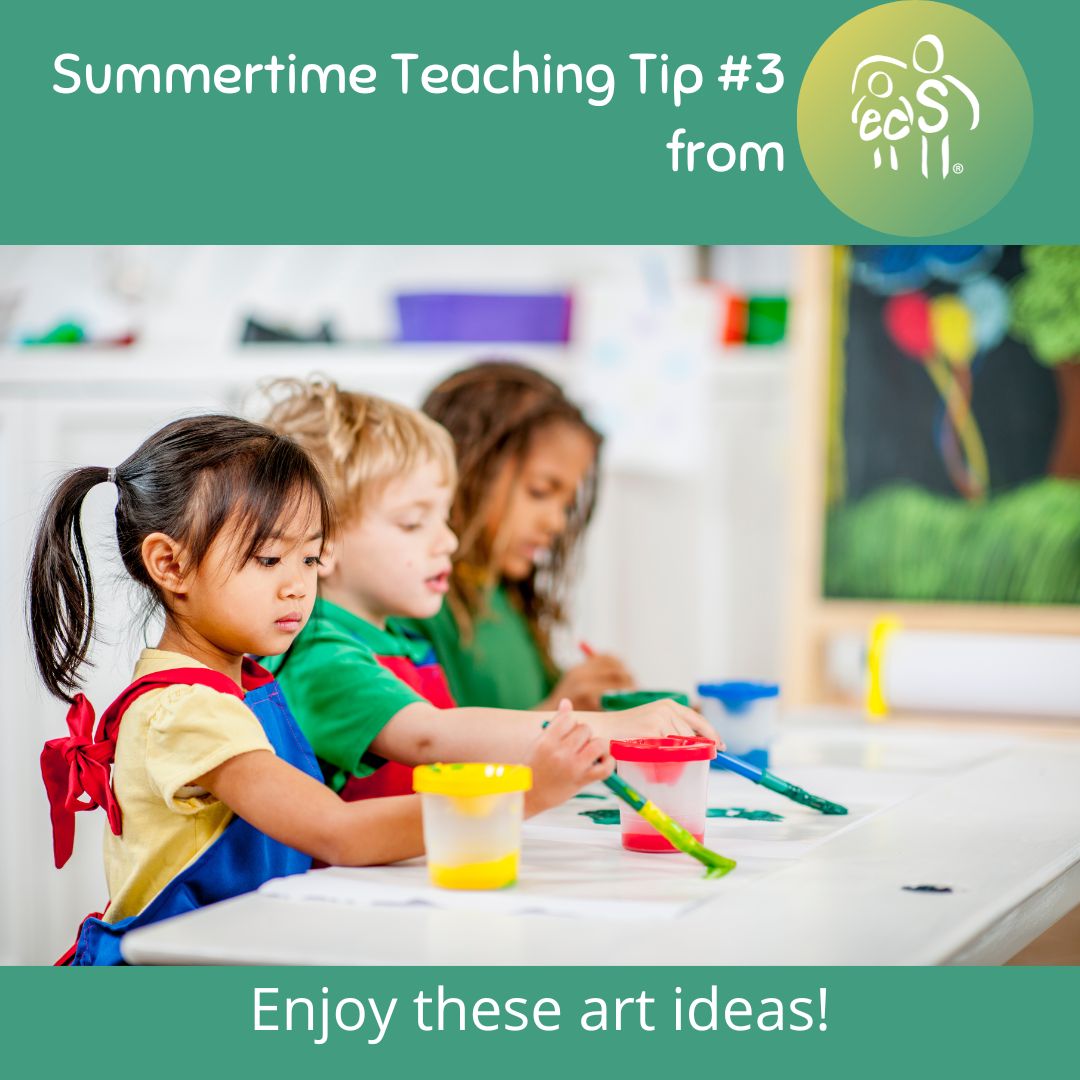
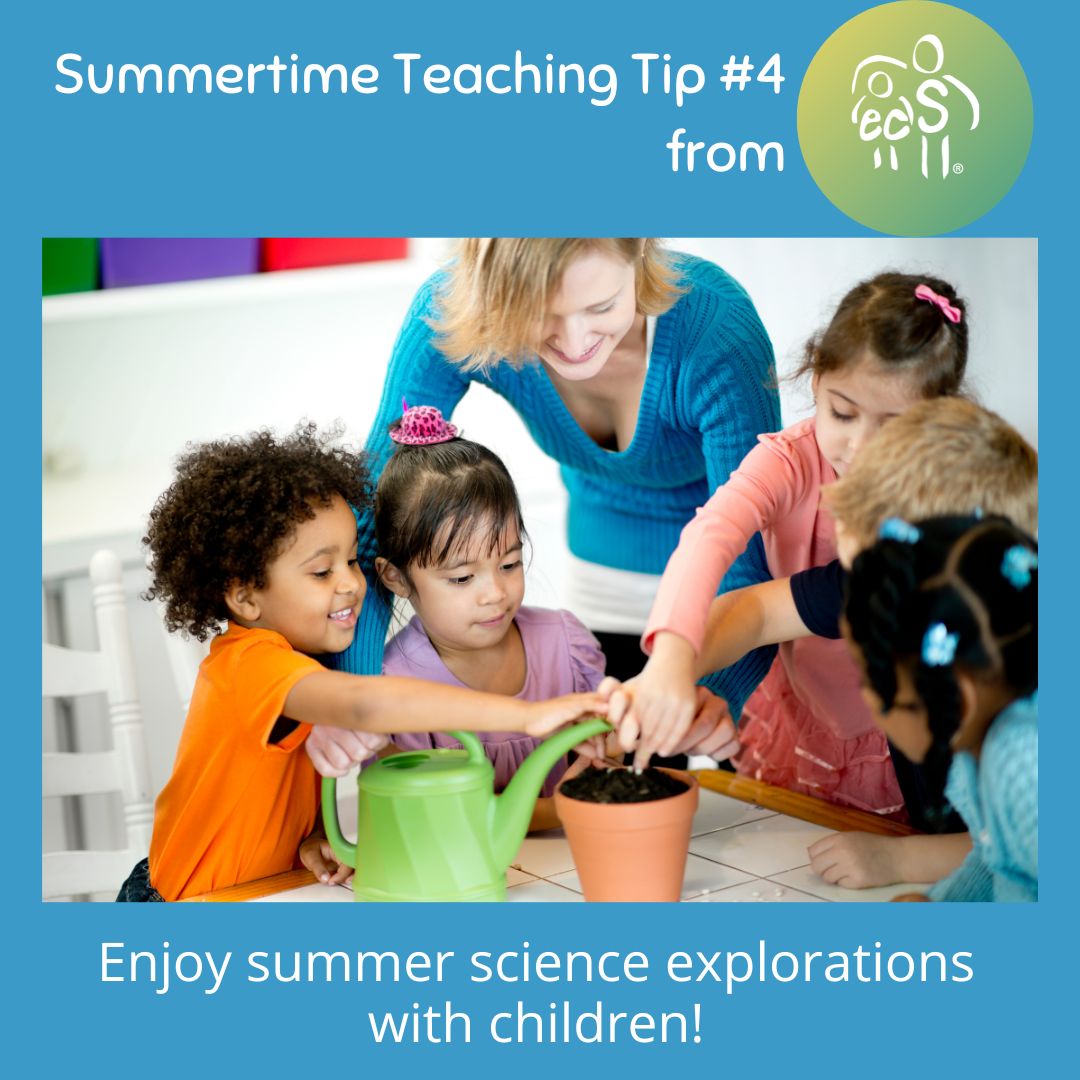
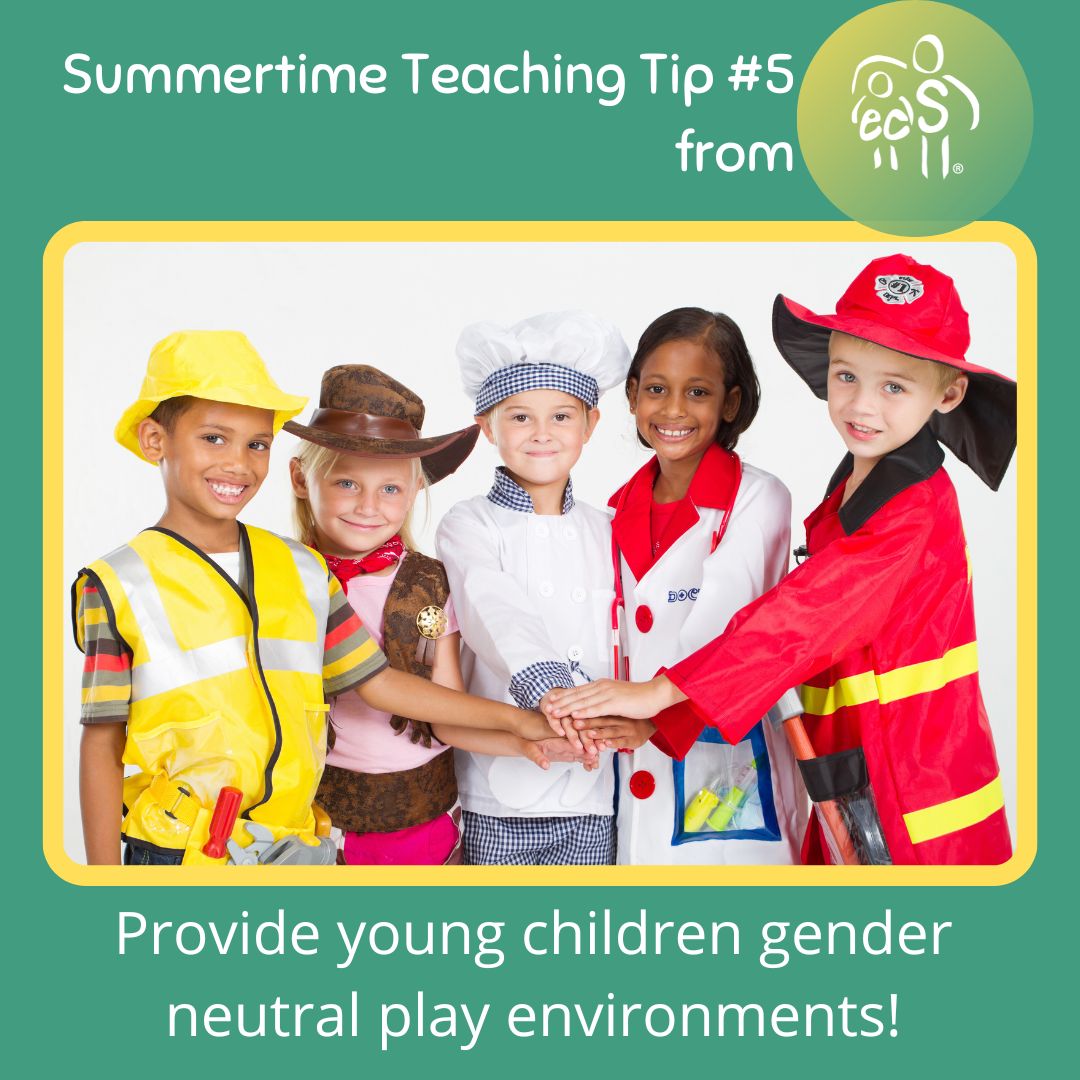
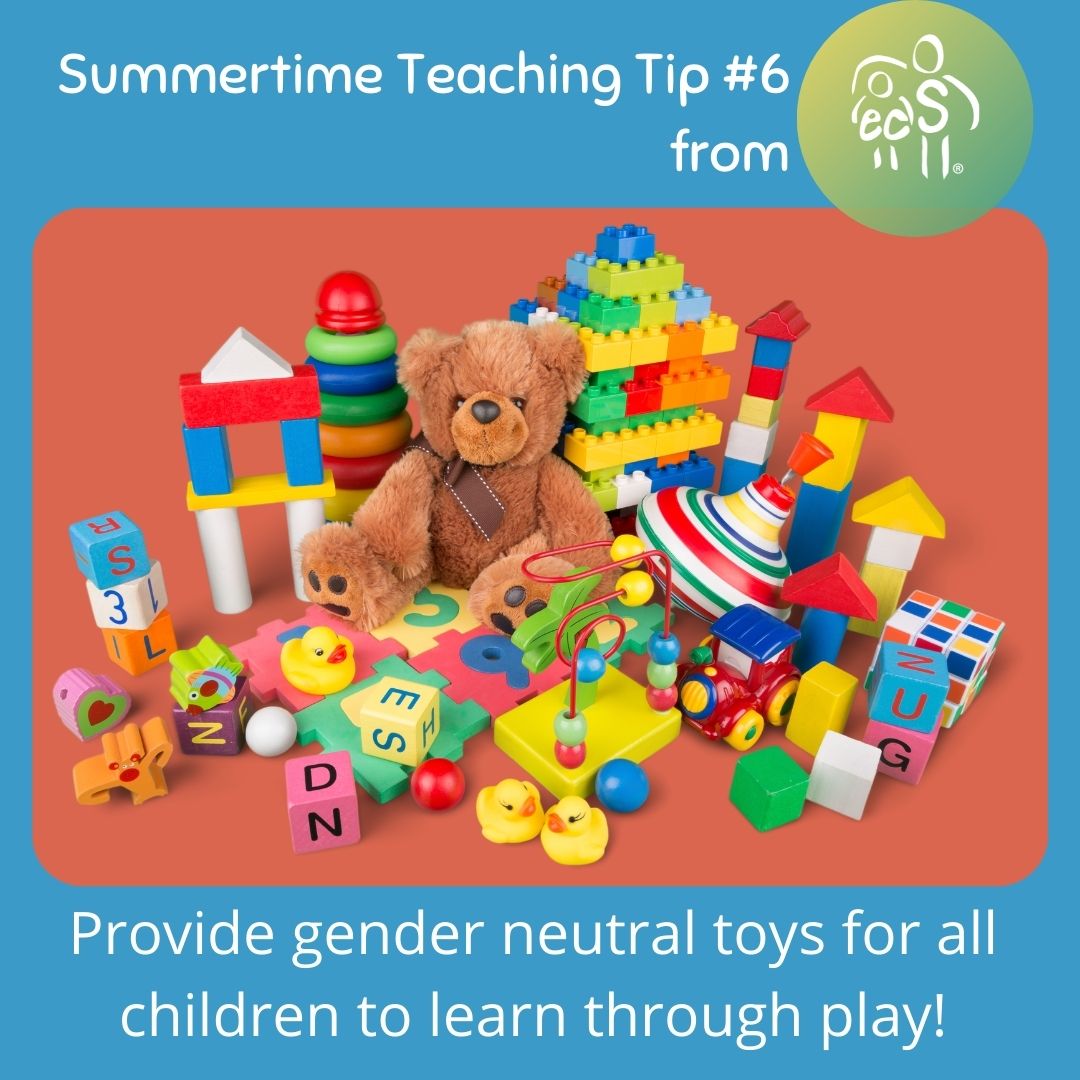

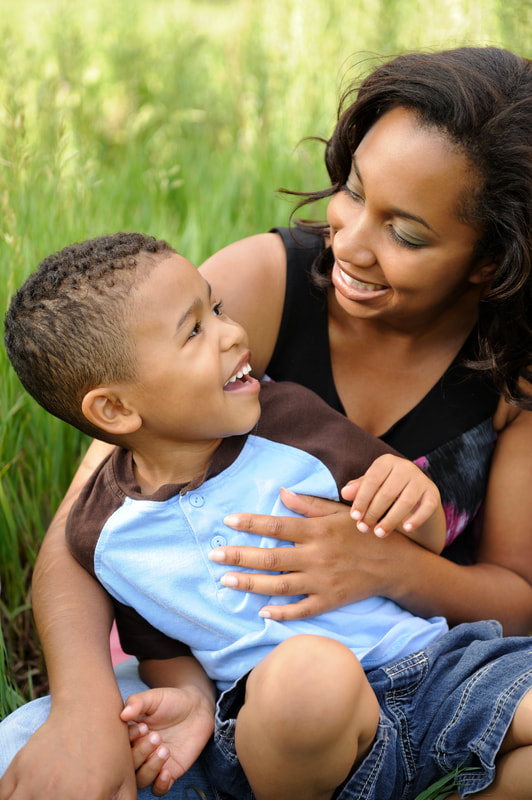
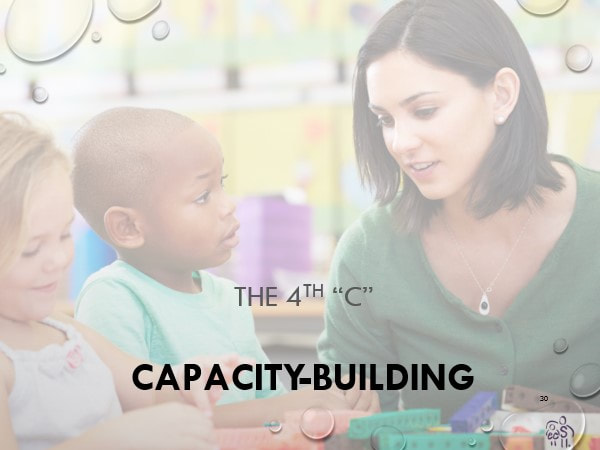
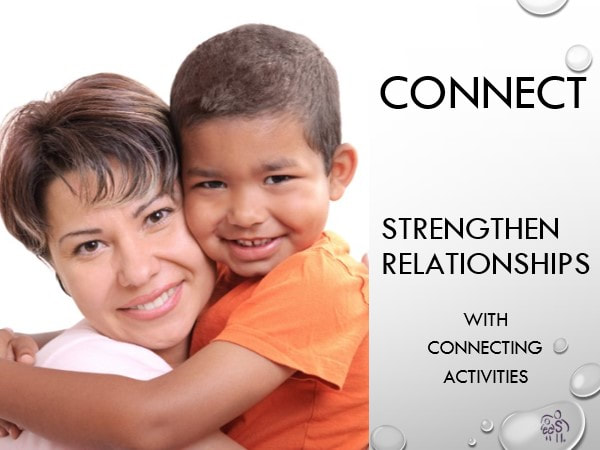
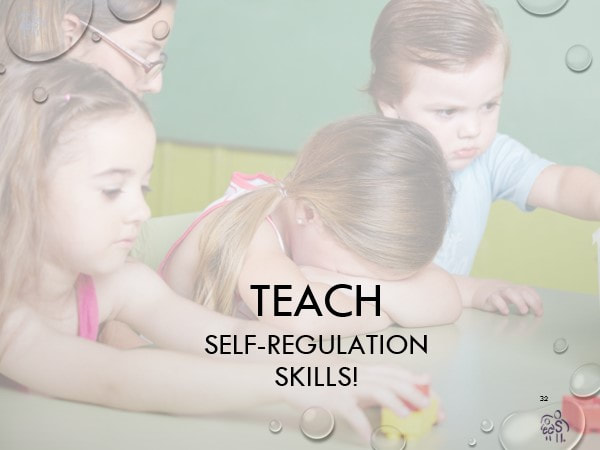
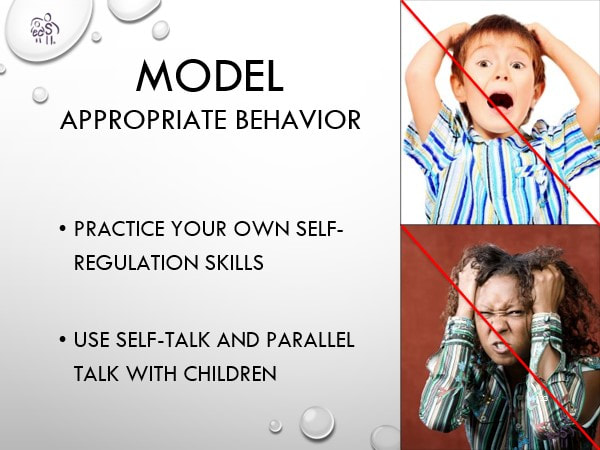
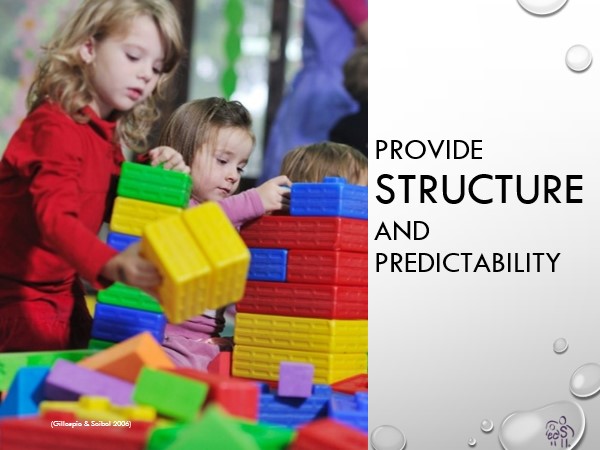
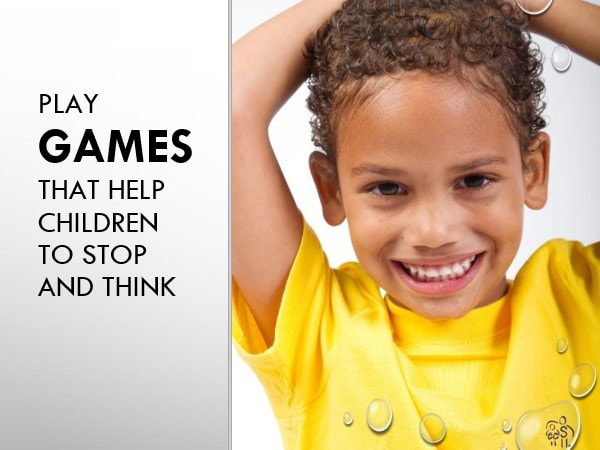
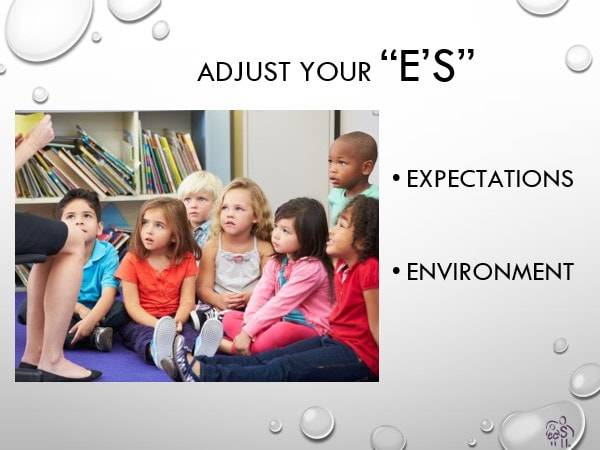
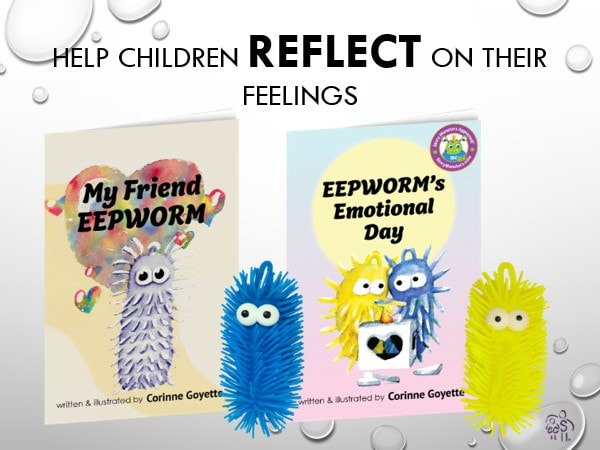
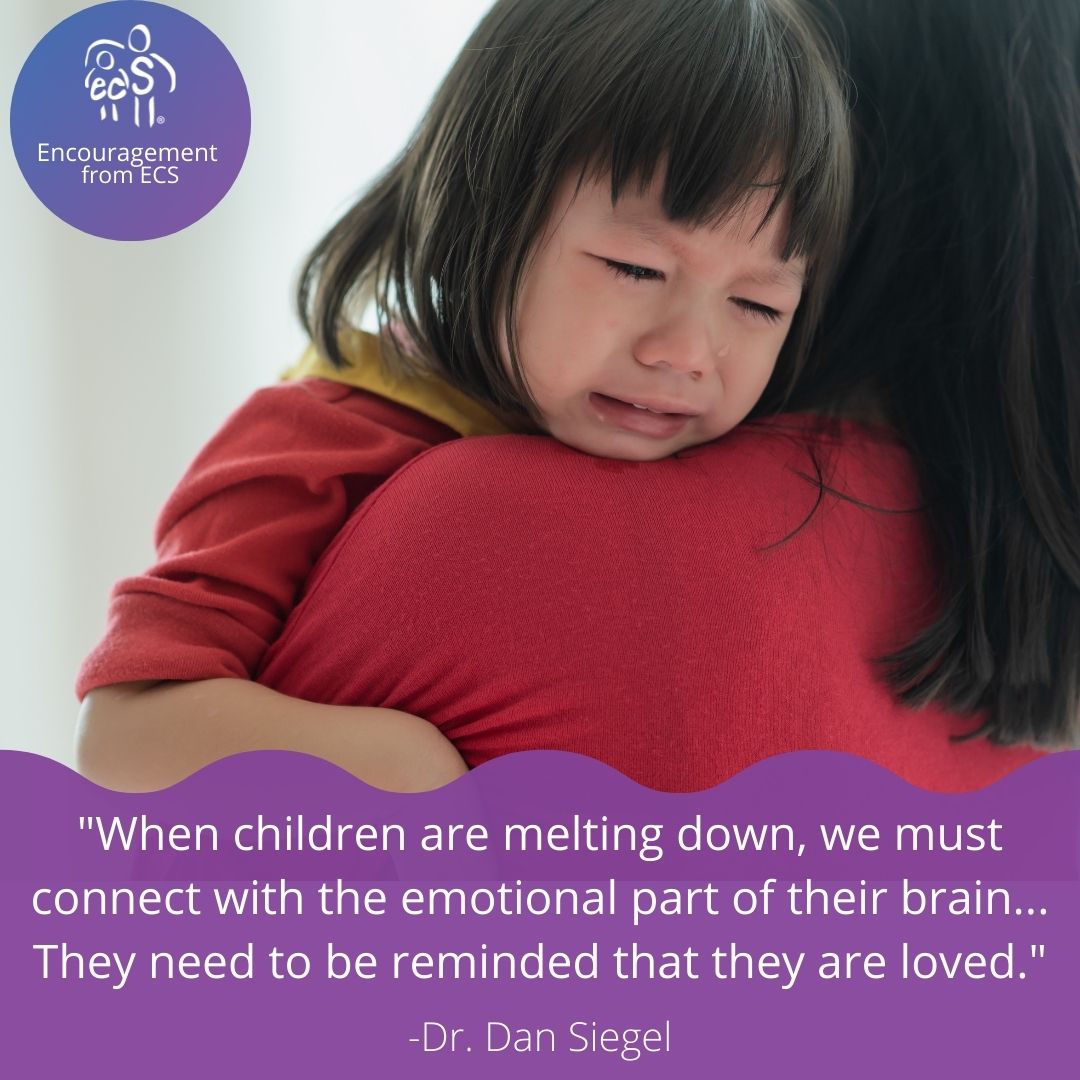
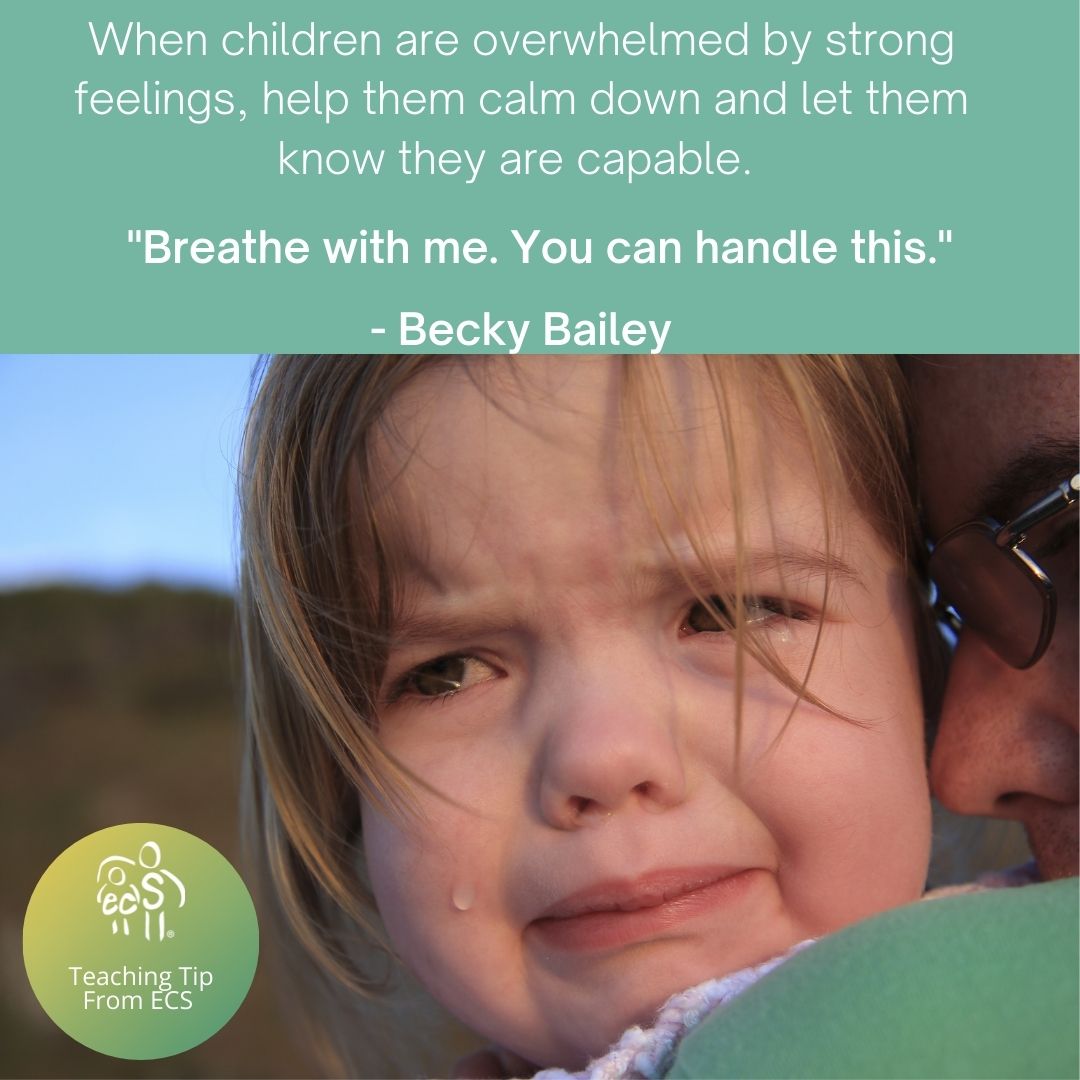
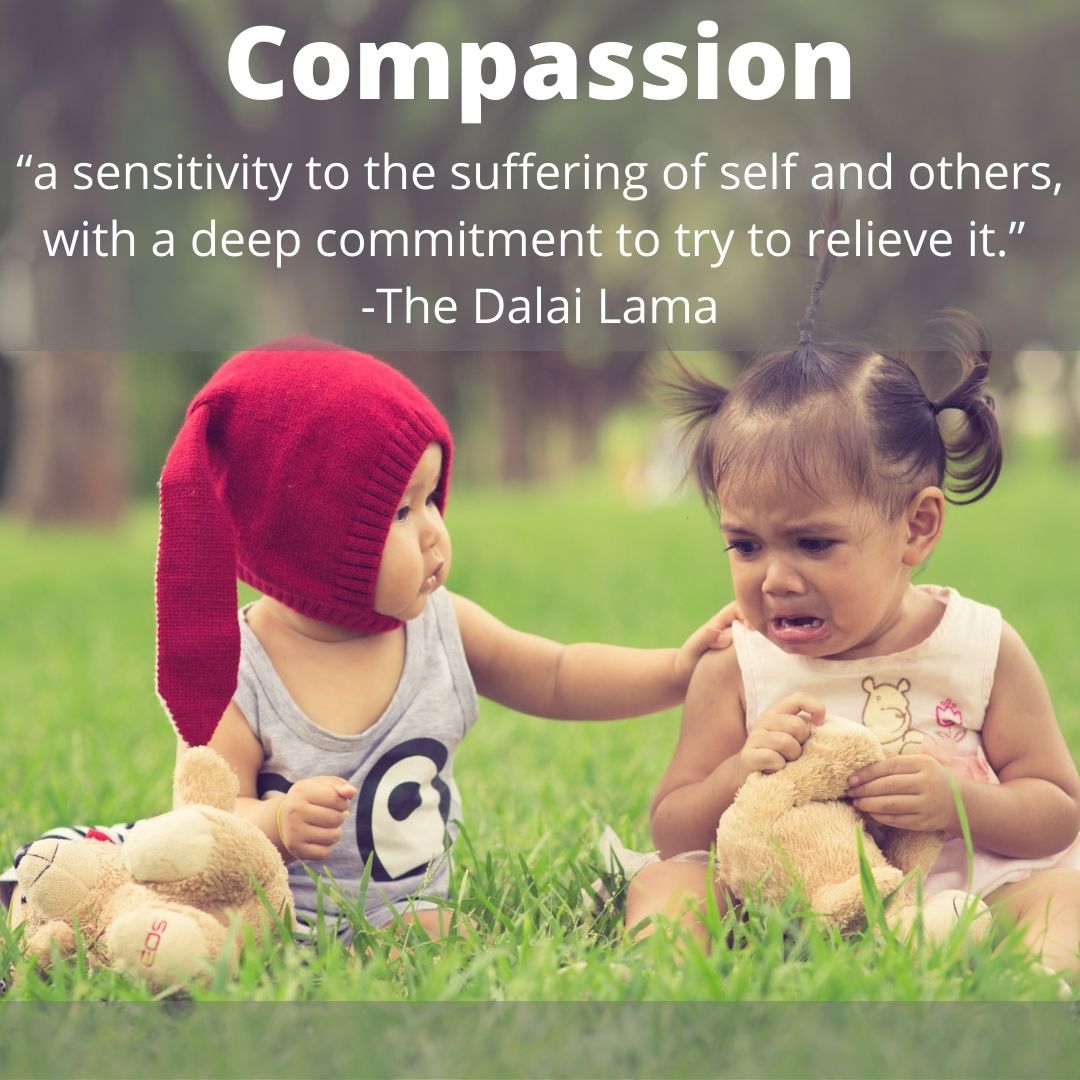

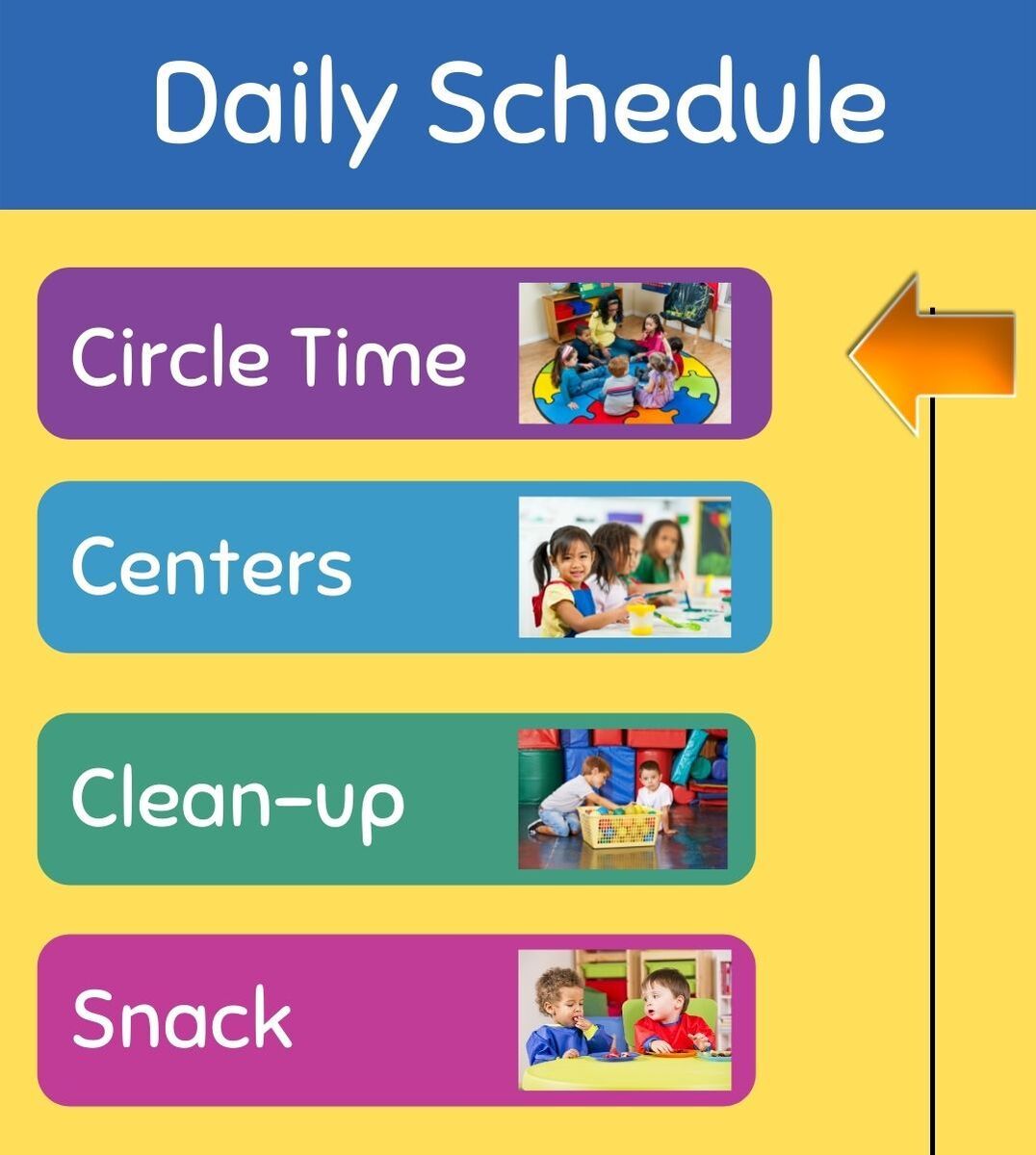
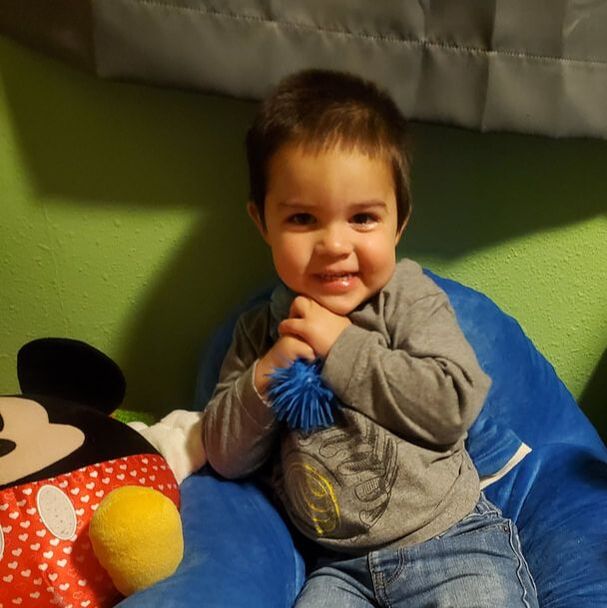
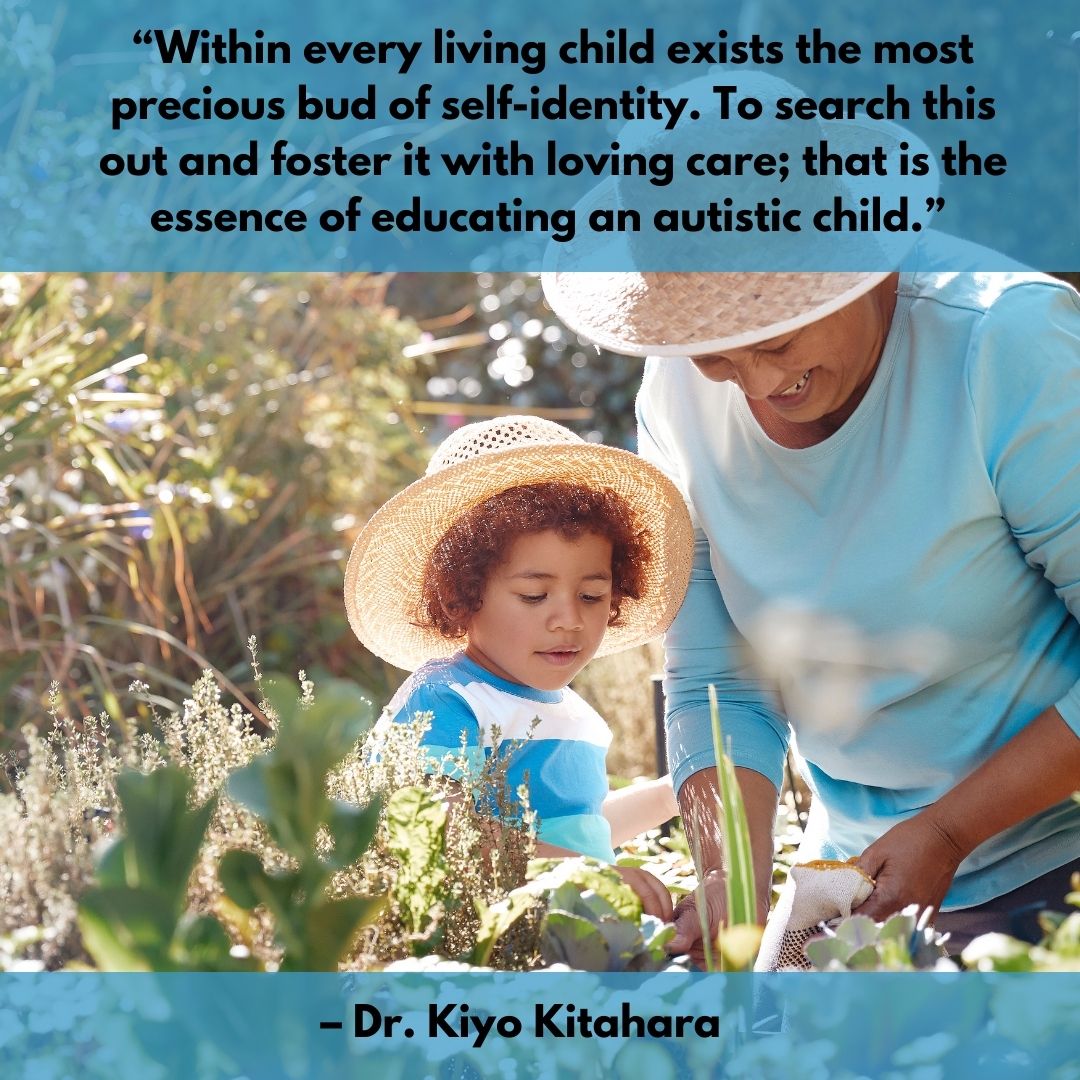

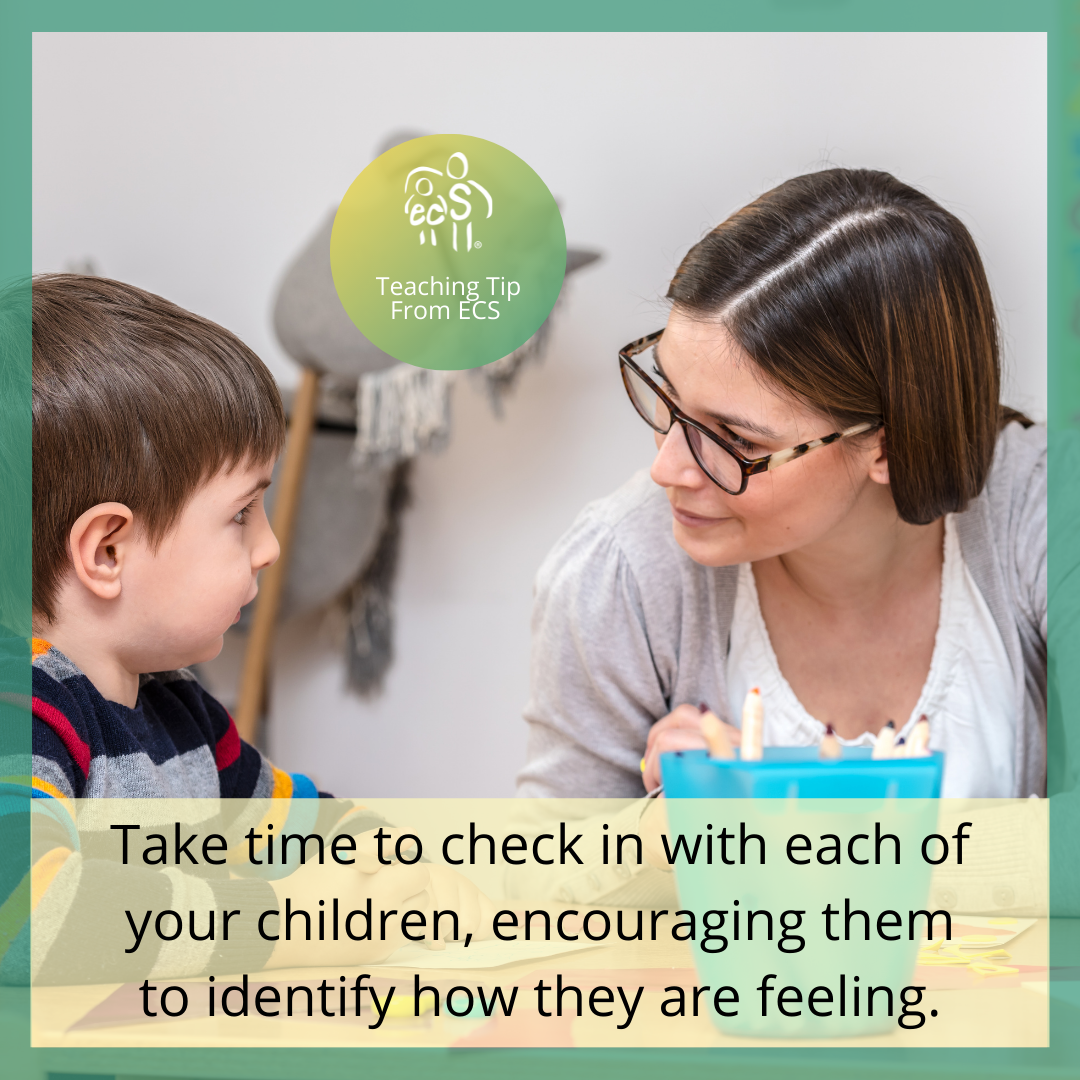
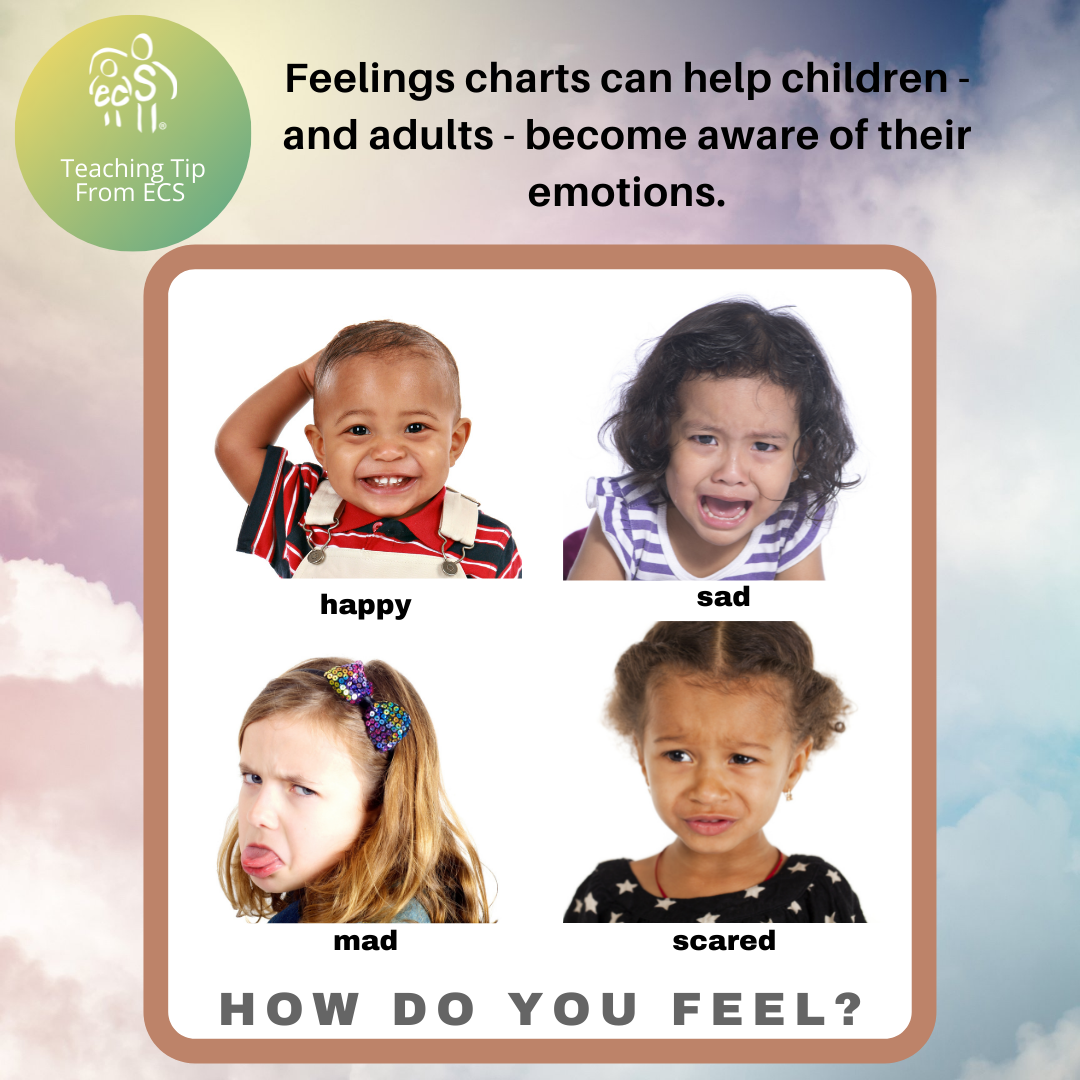
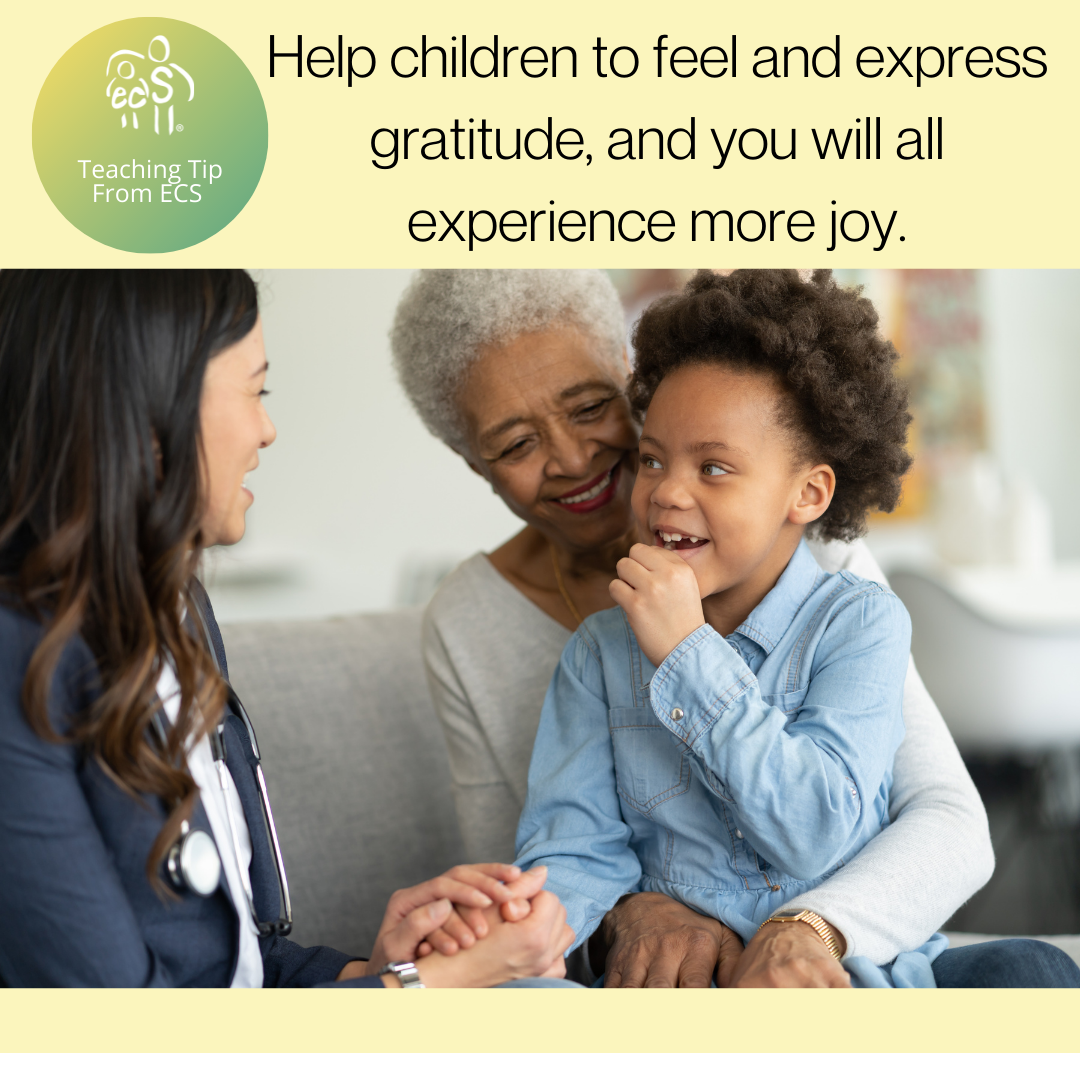
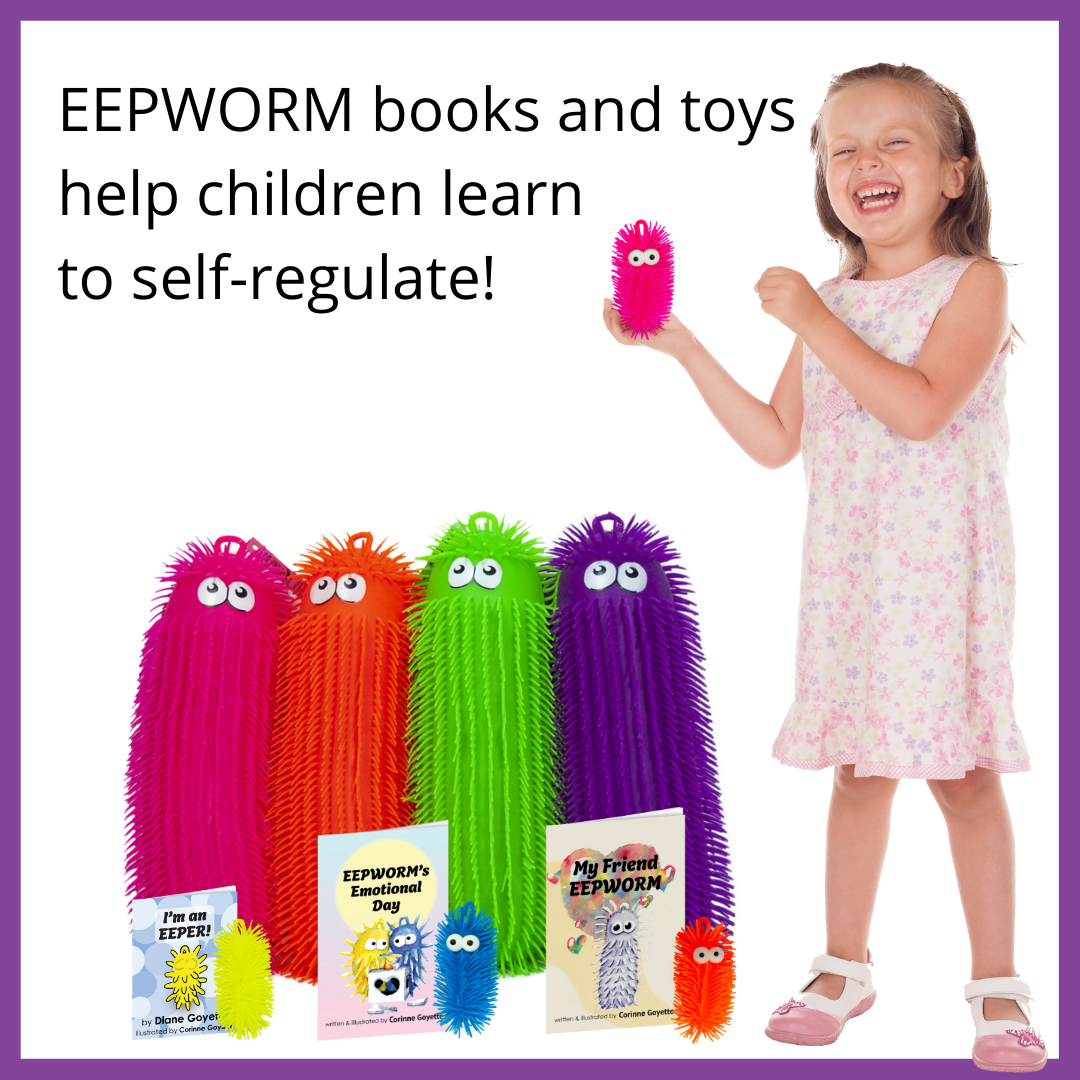

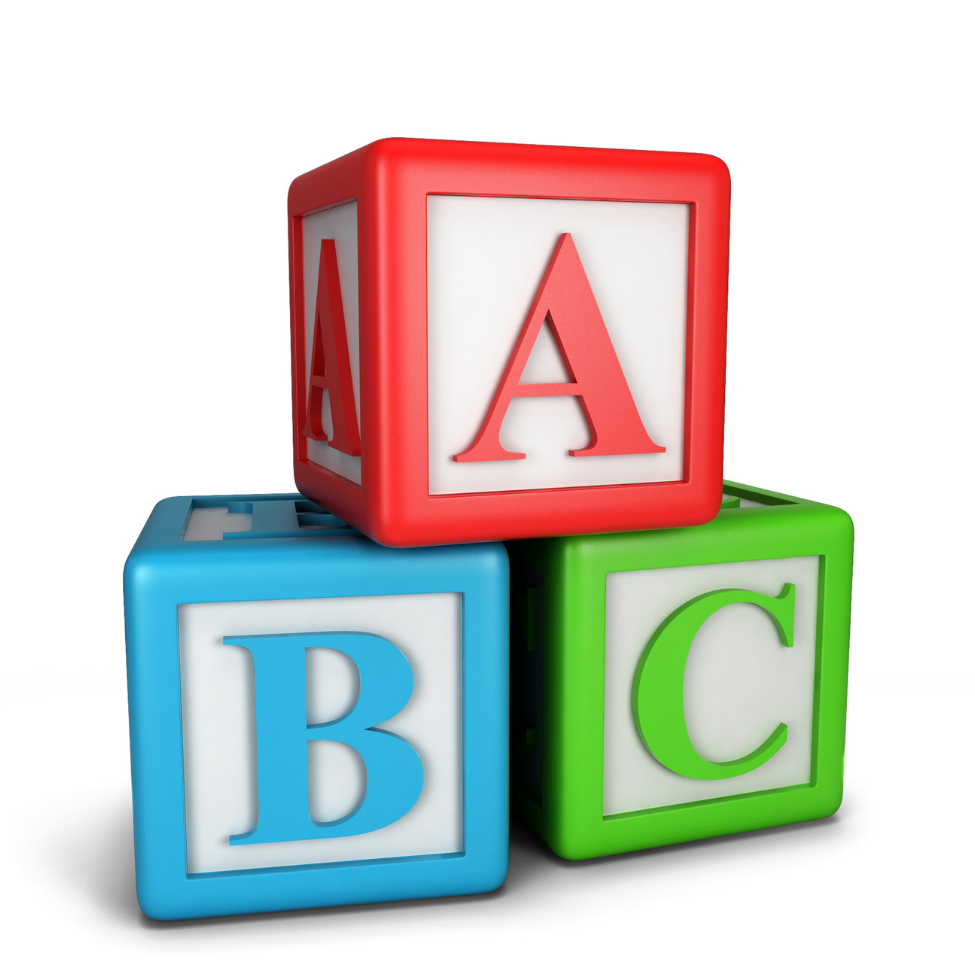
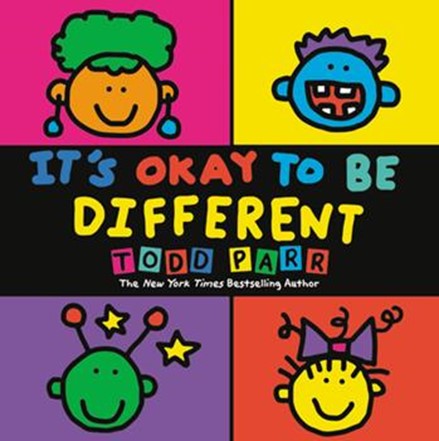
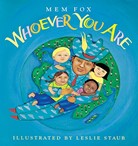
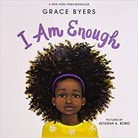
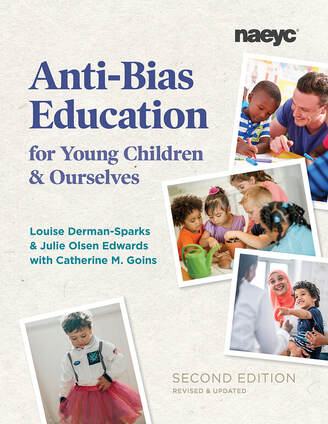
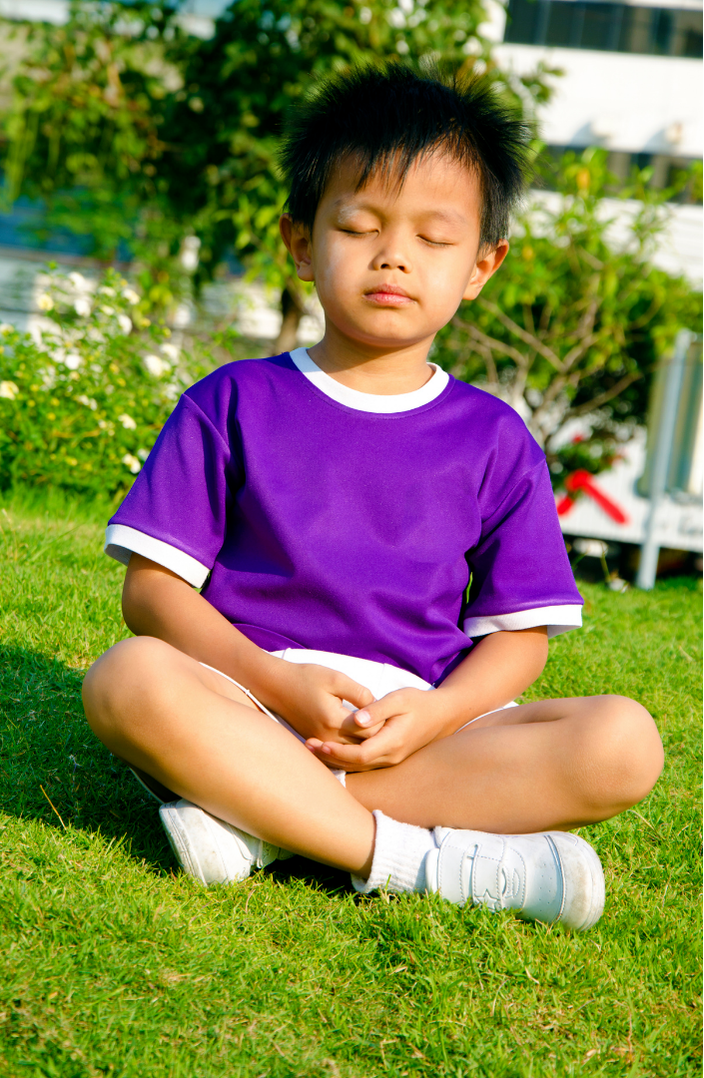
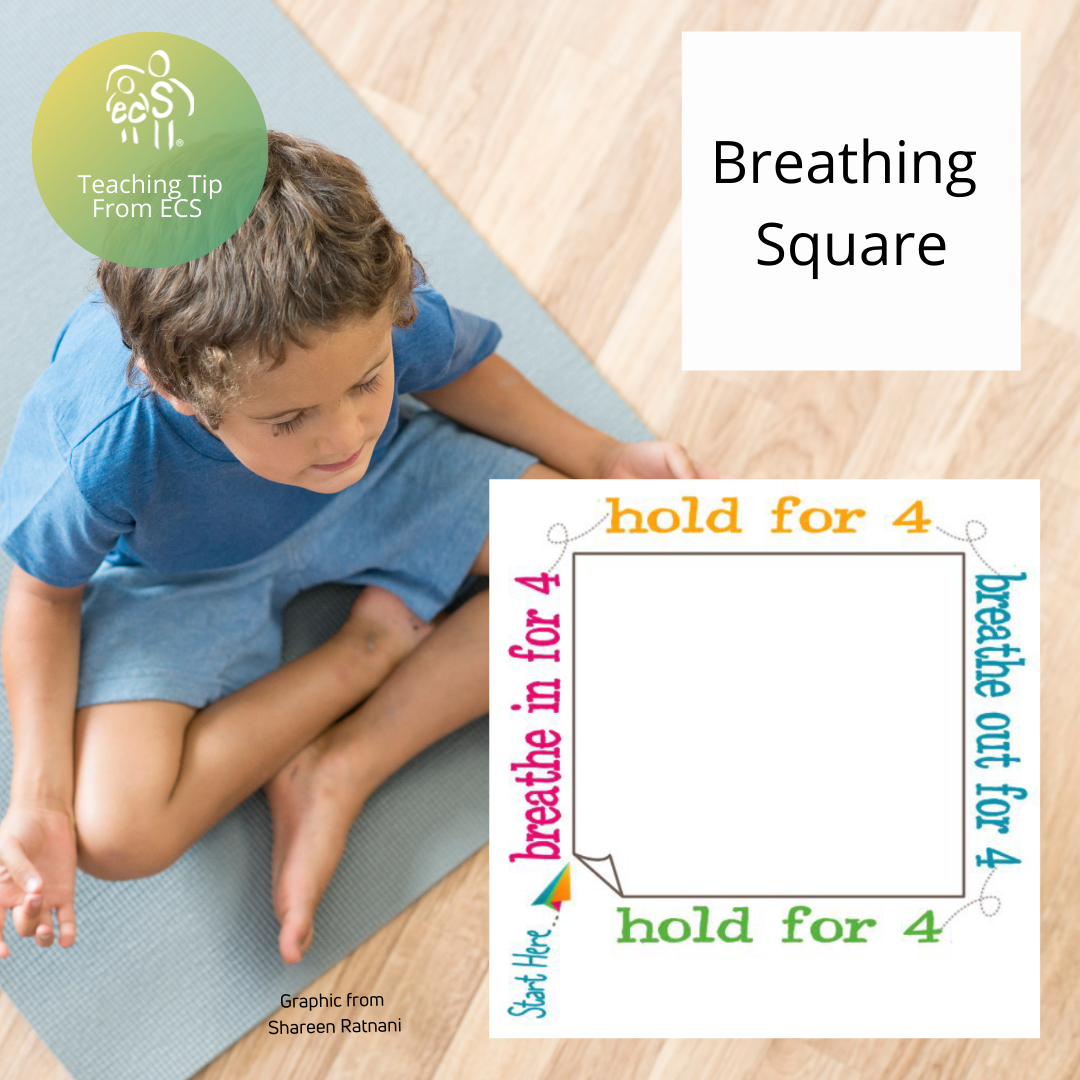
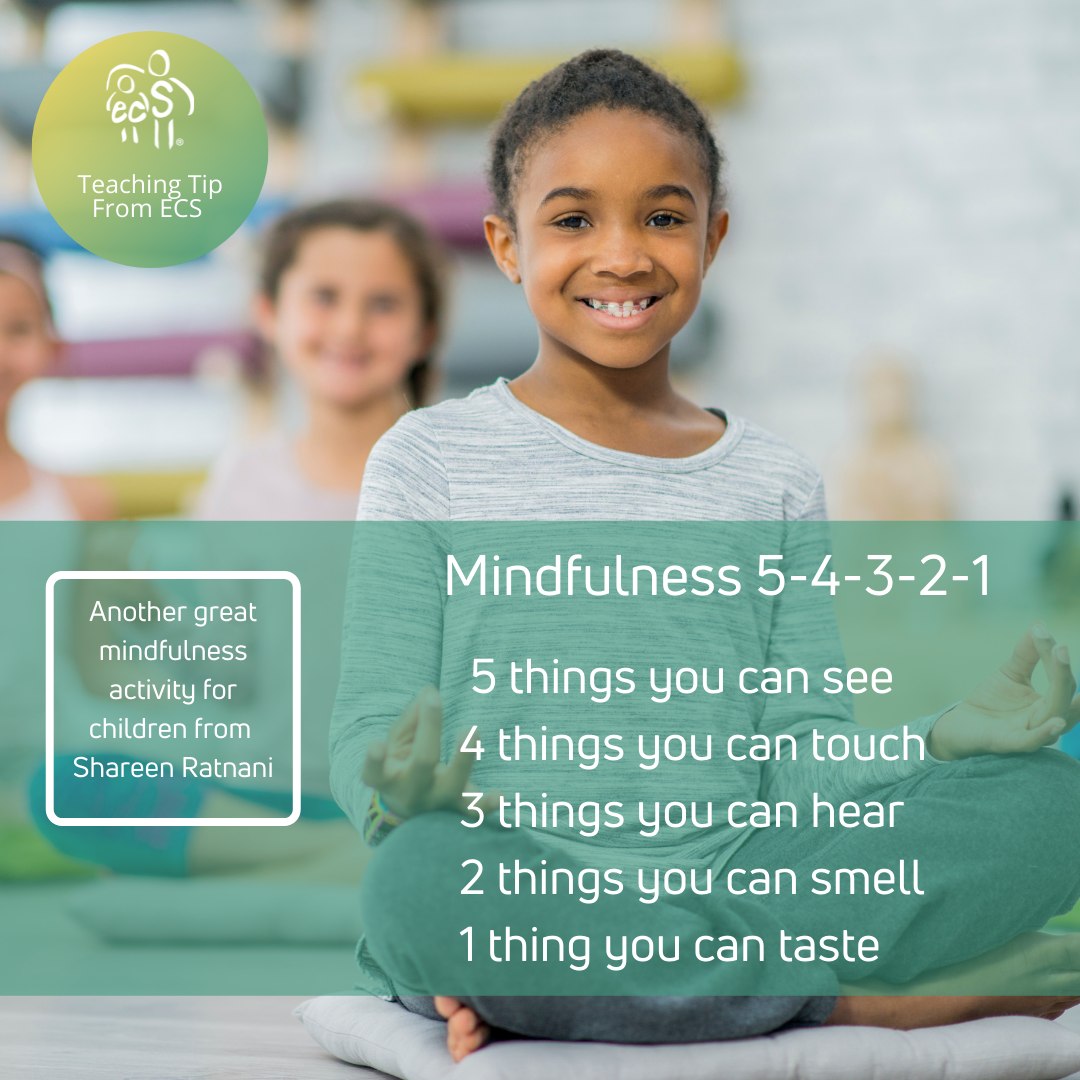
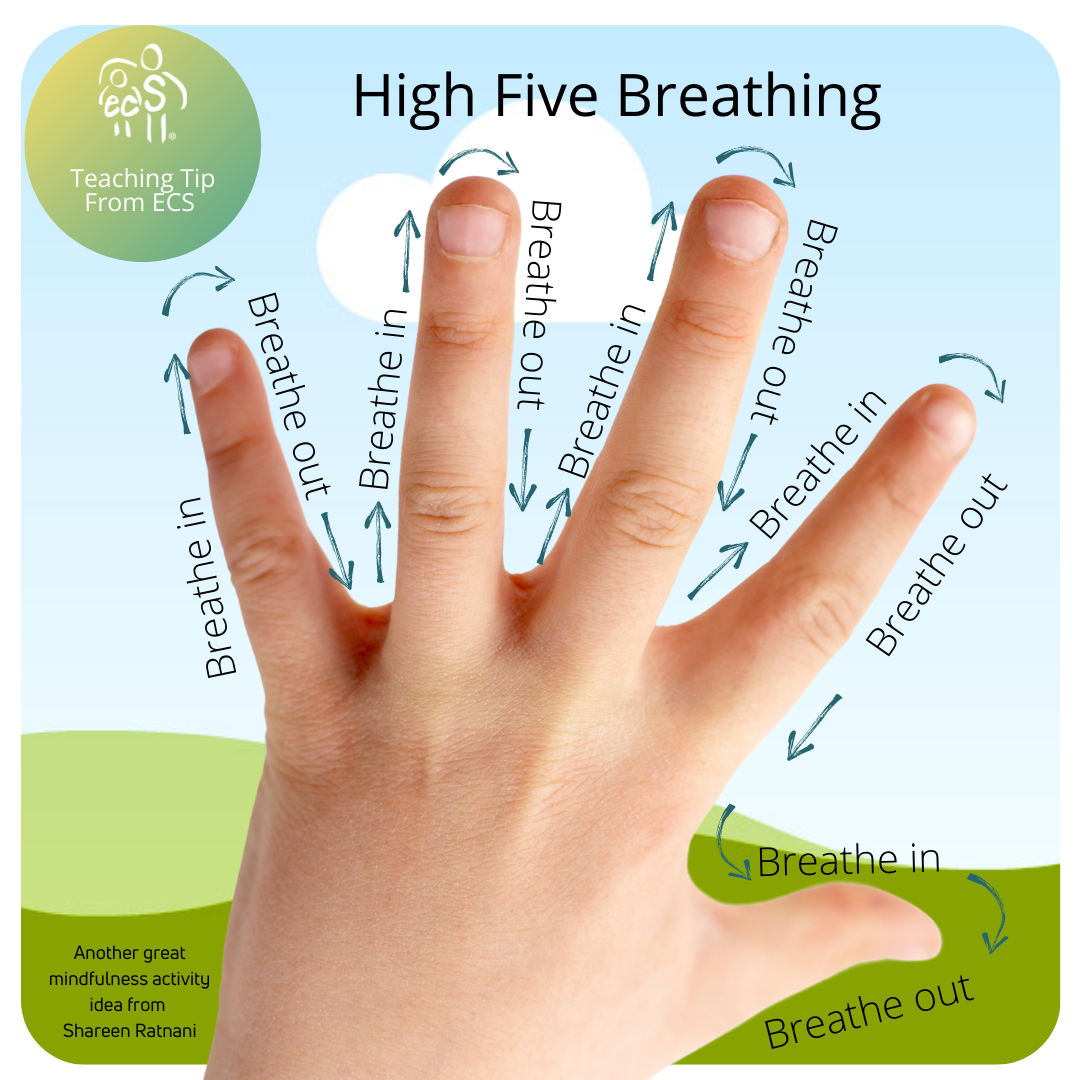
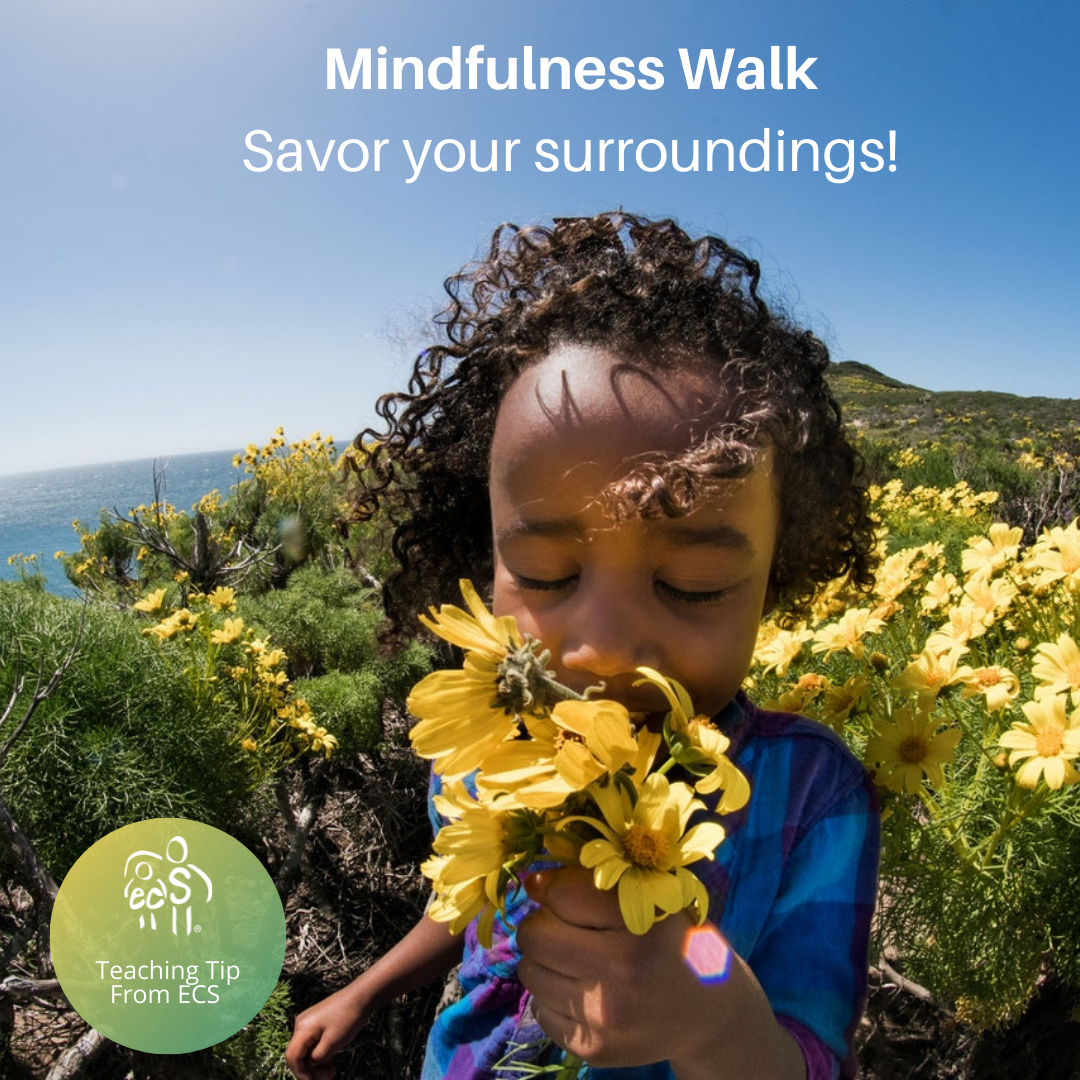
 RSS Feed
RSS Feed